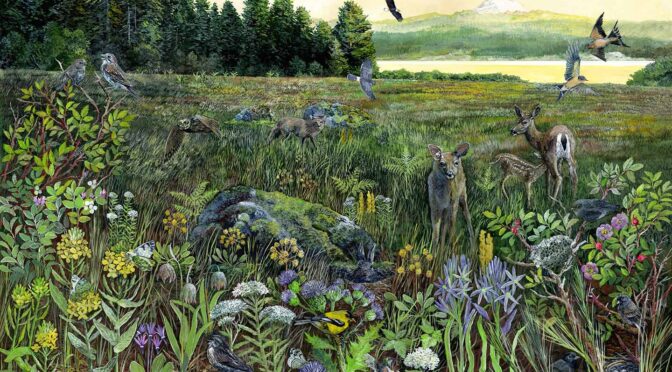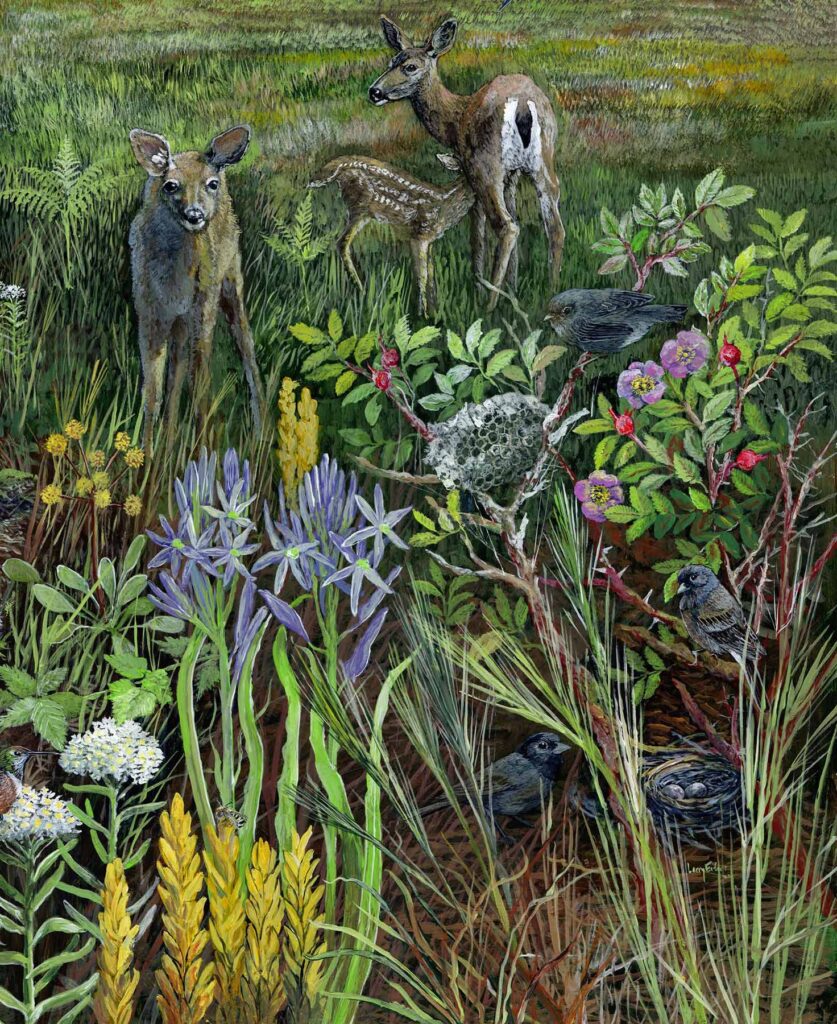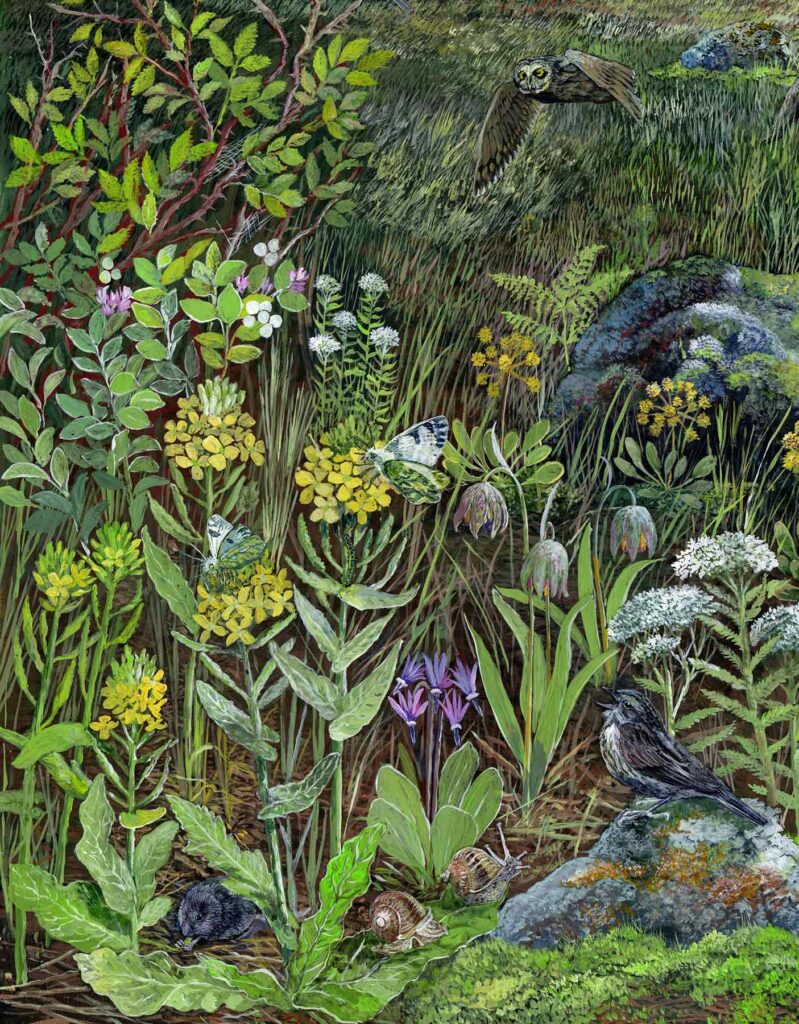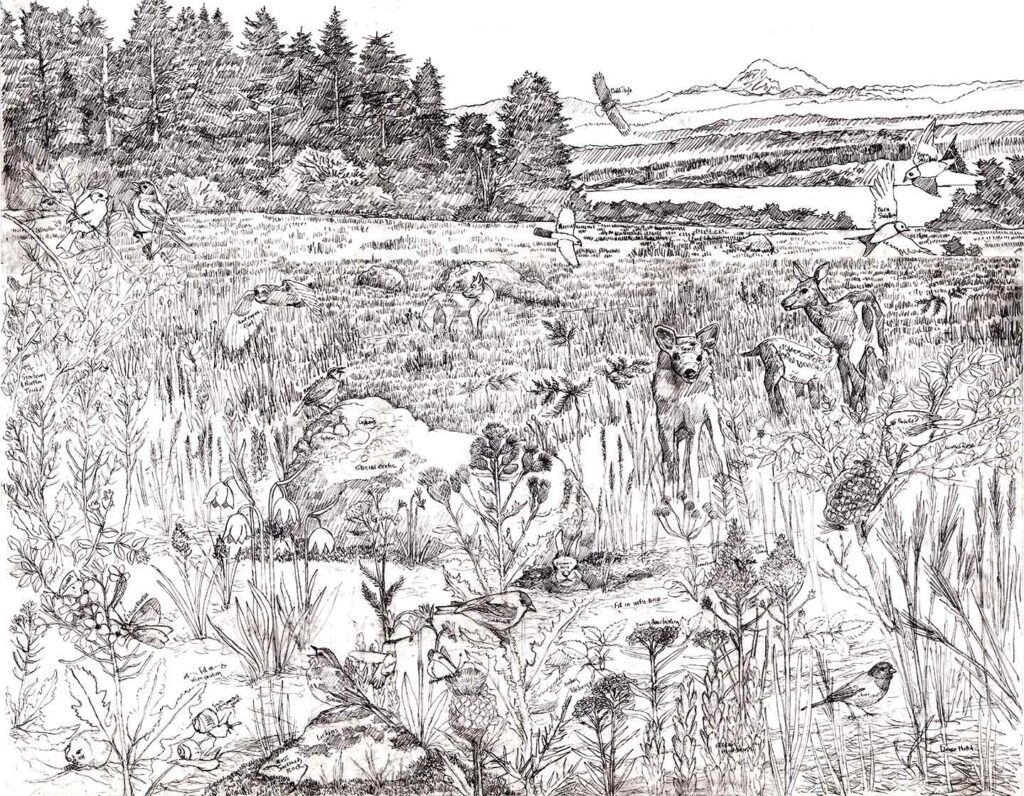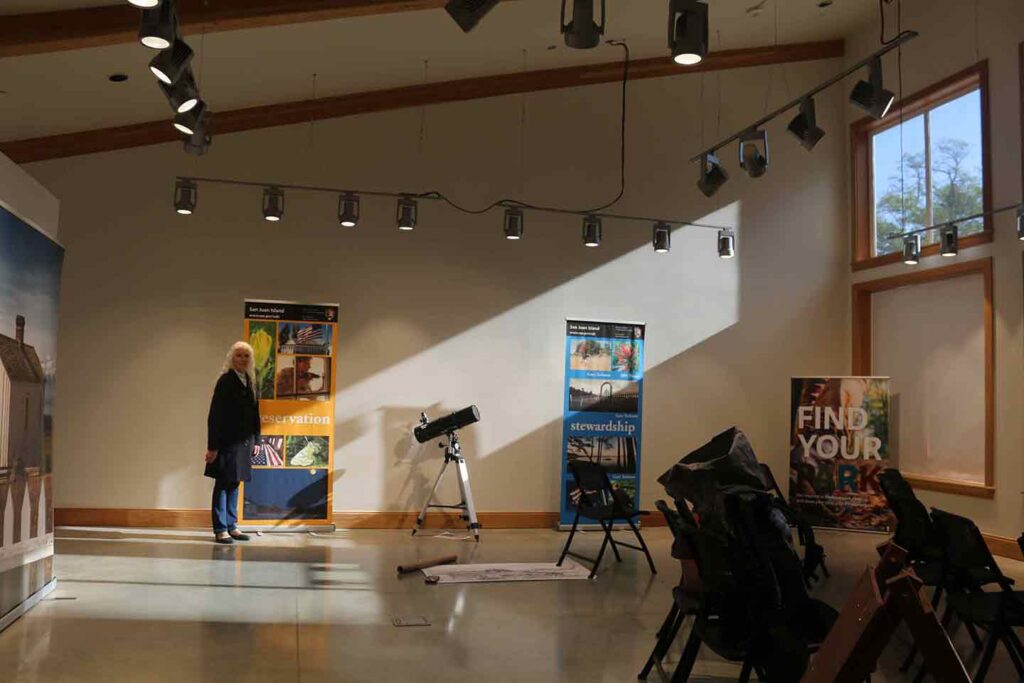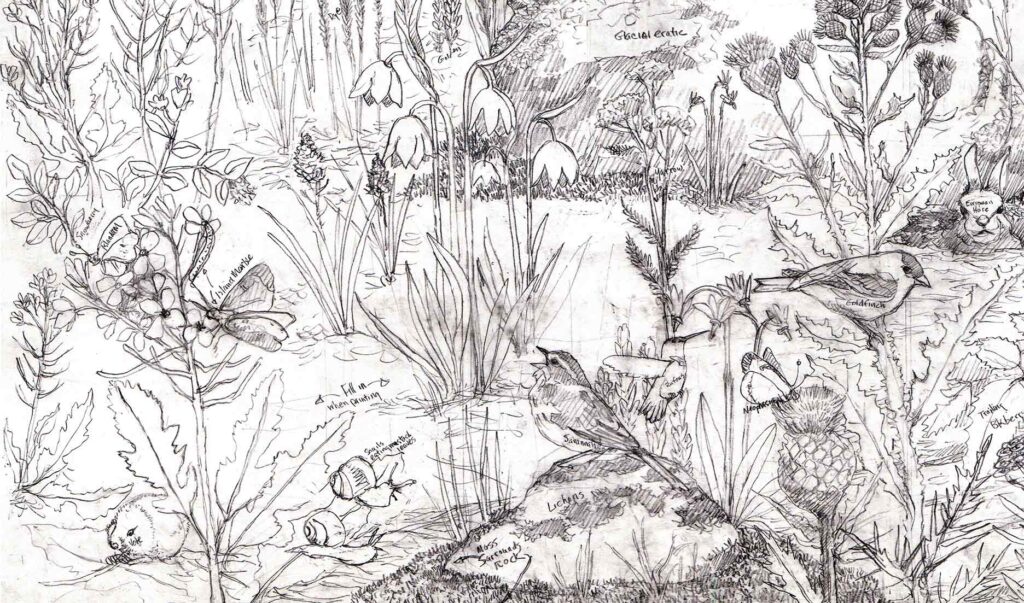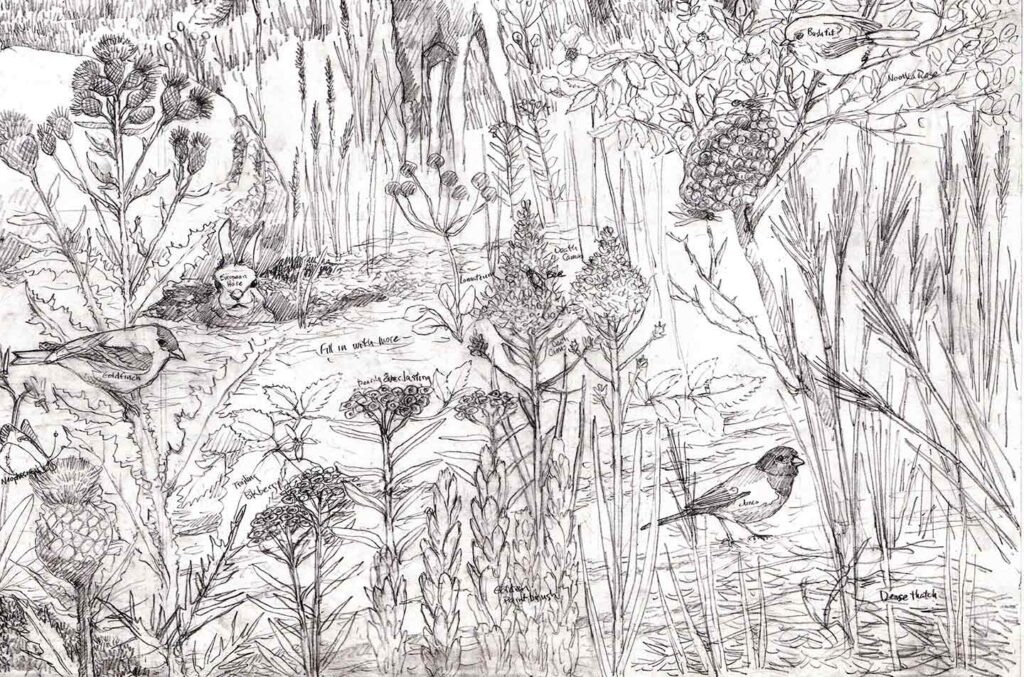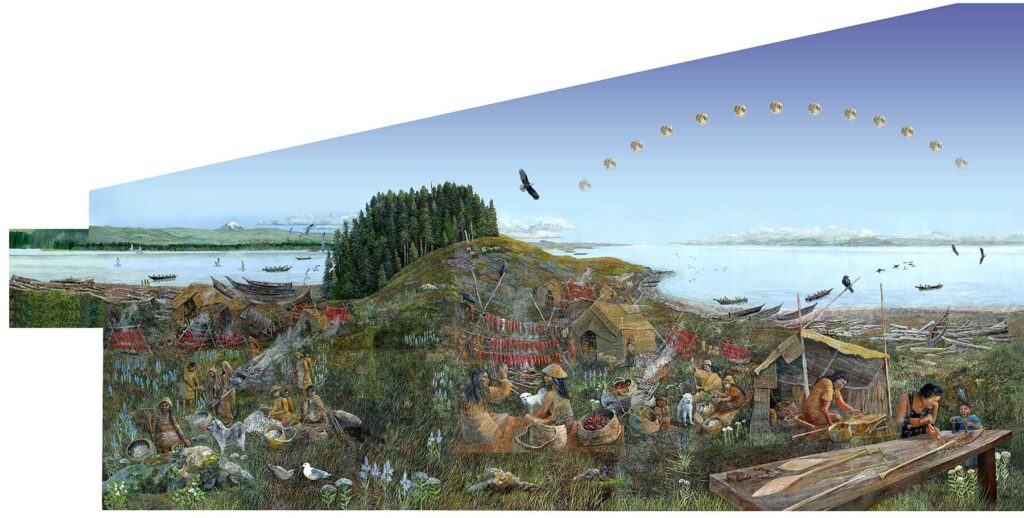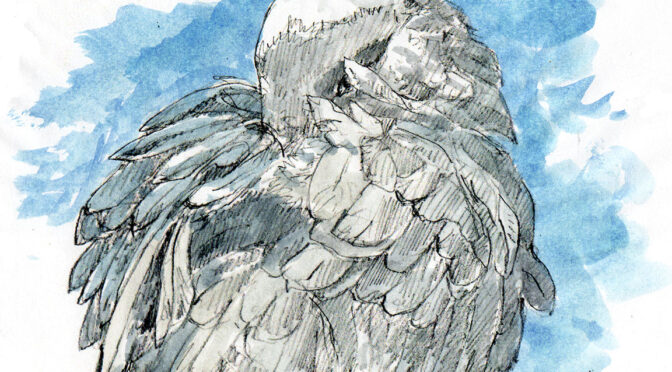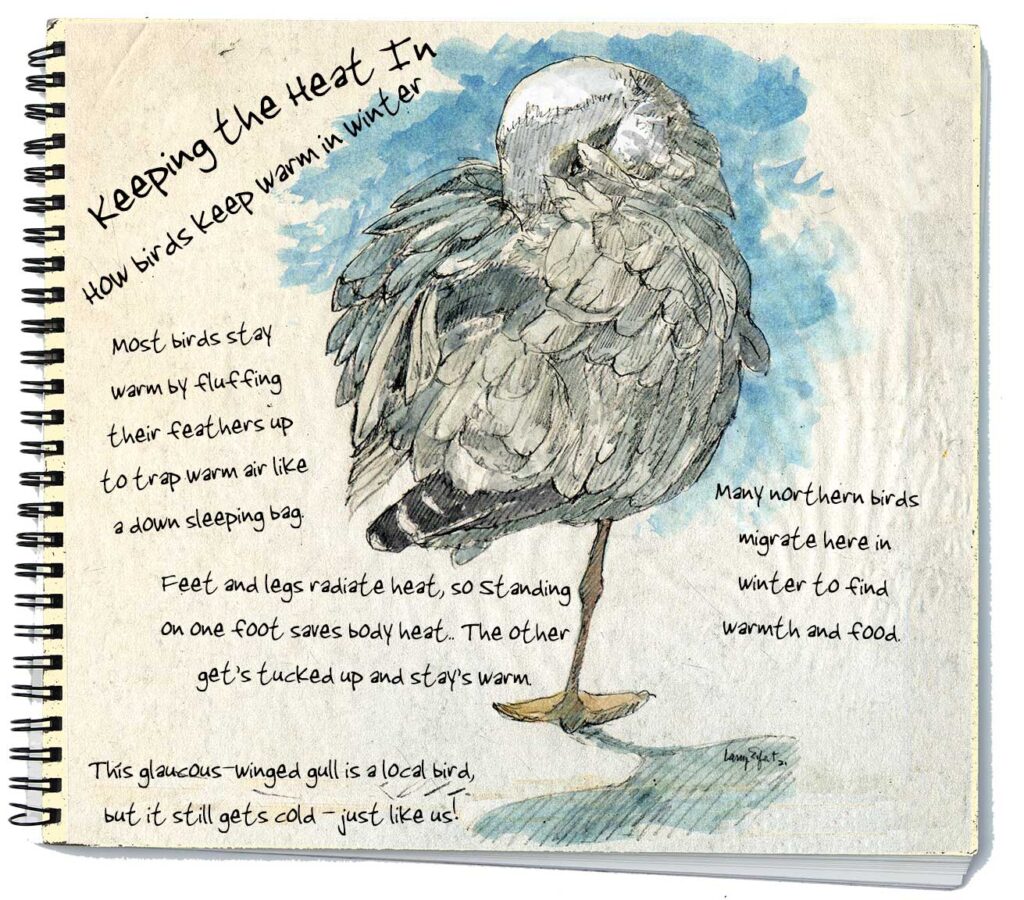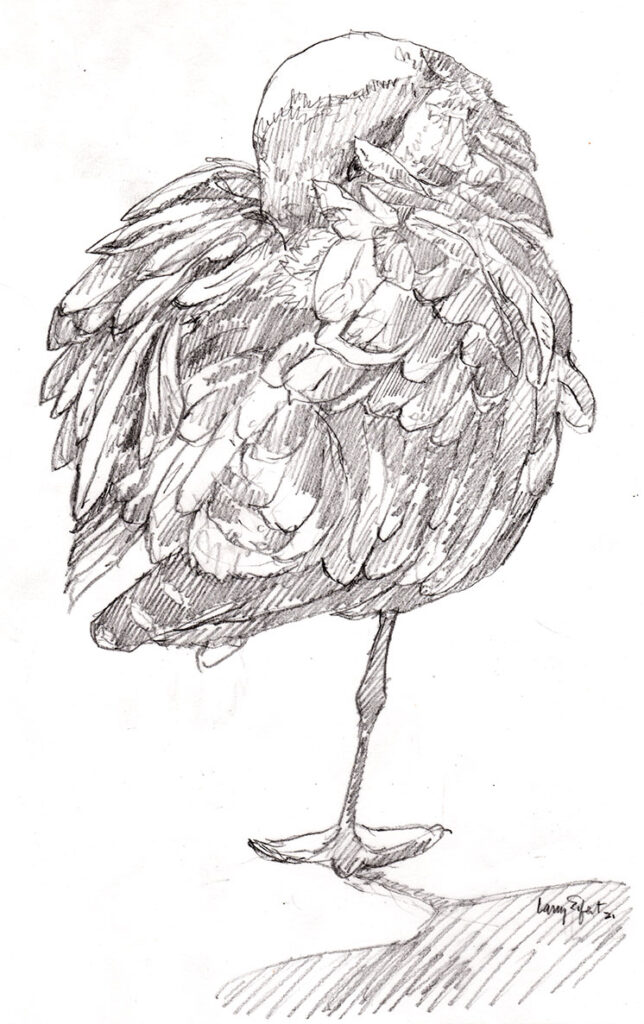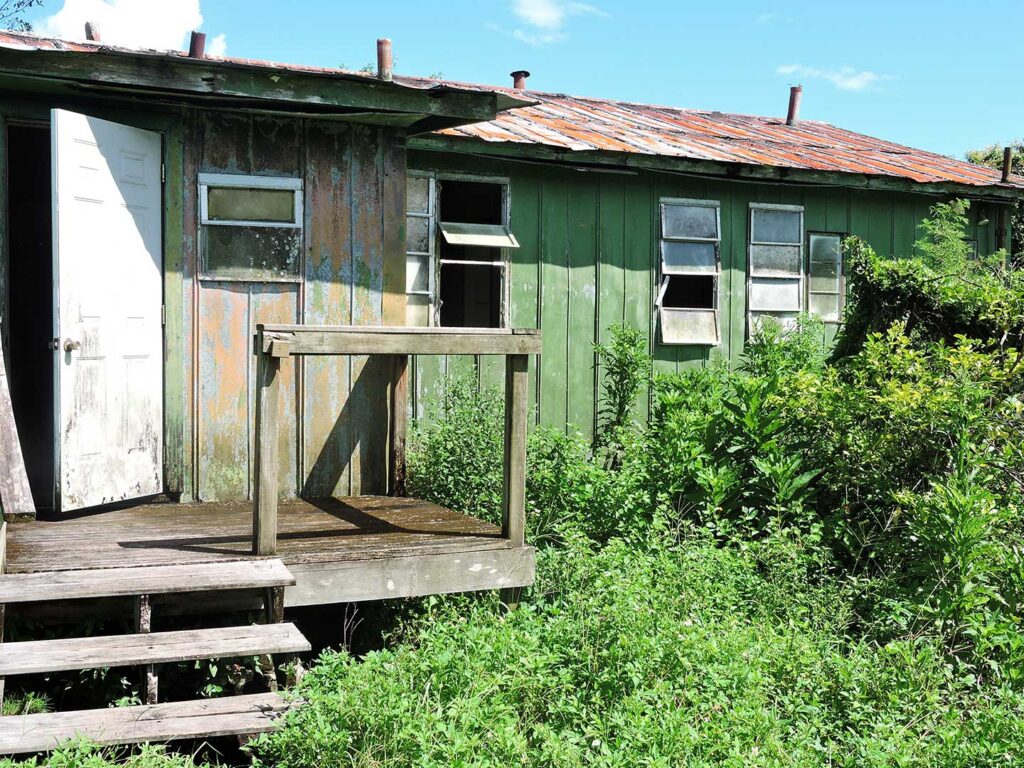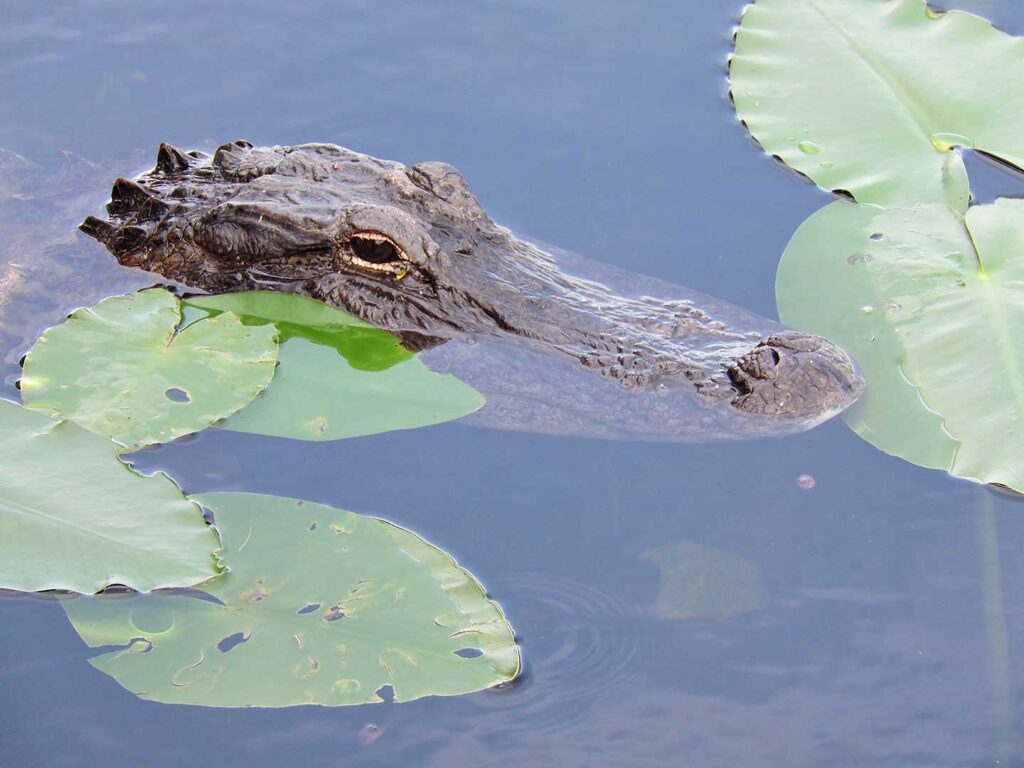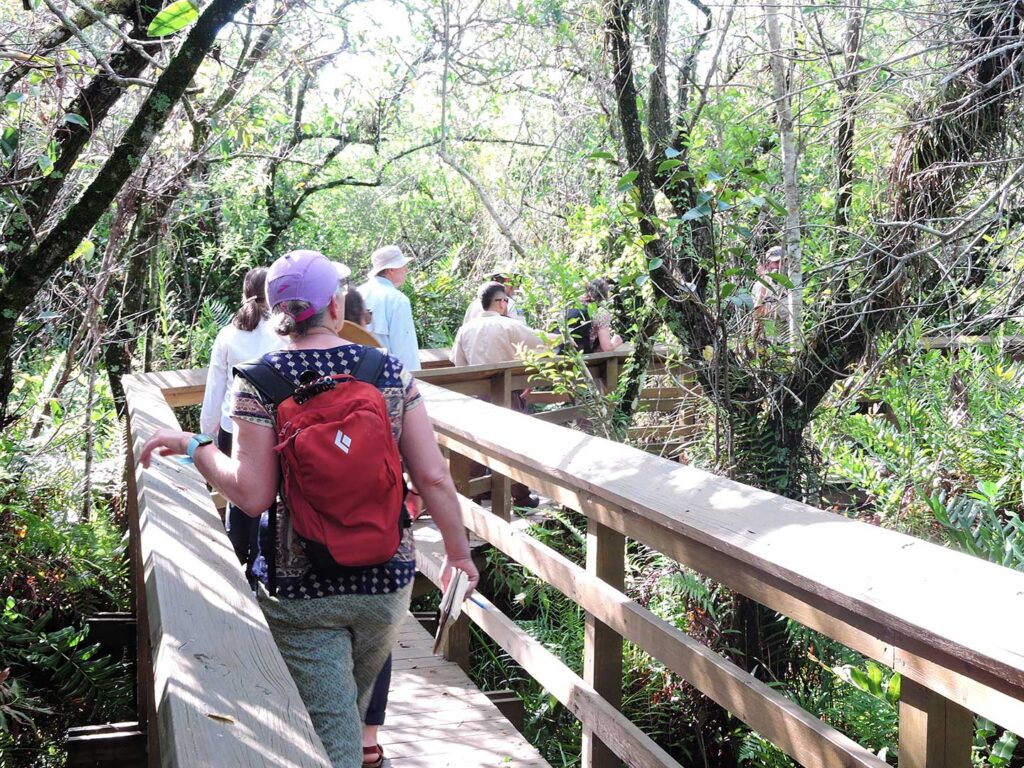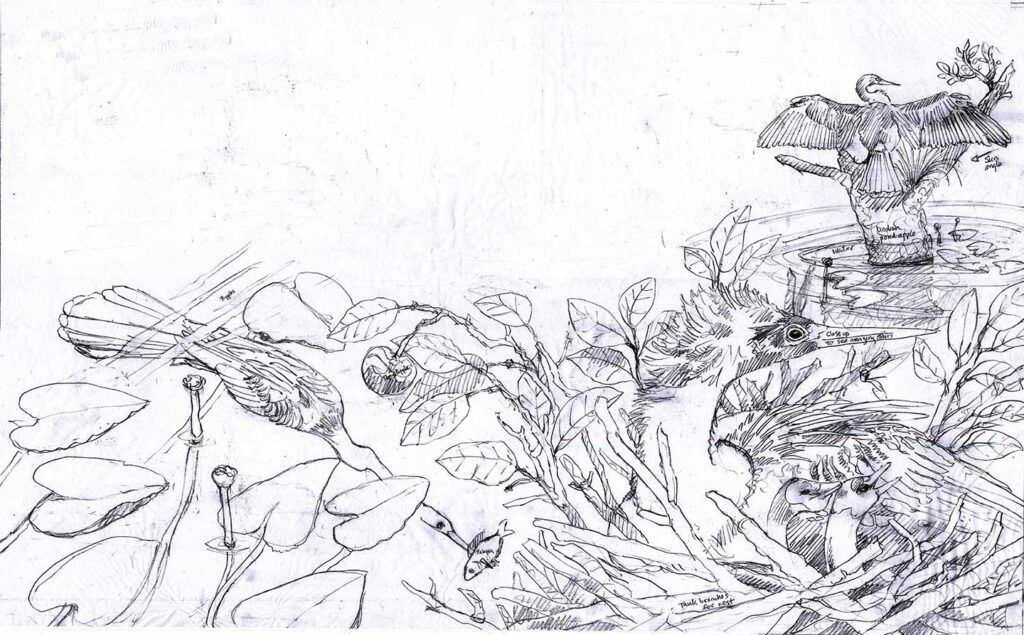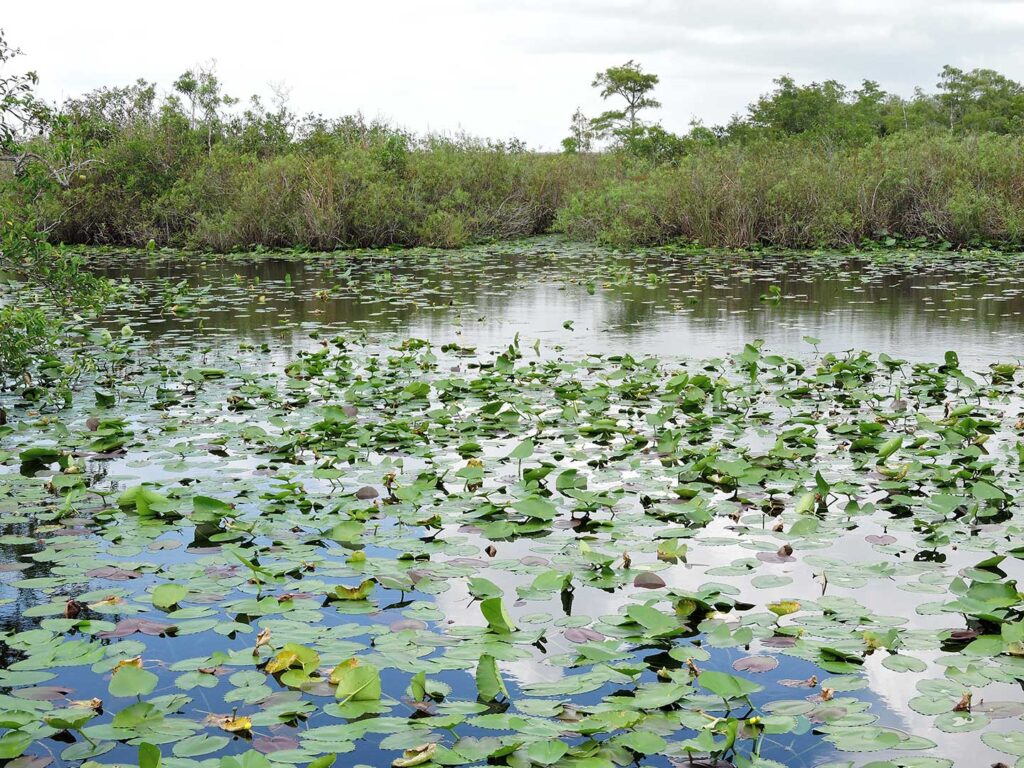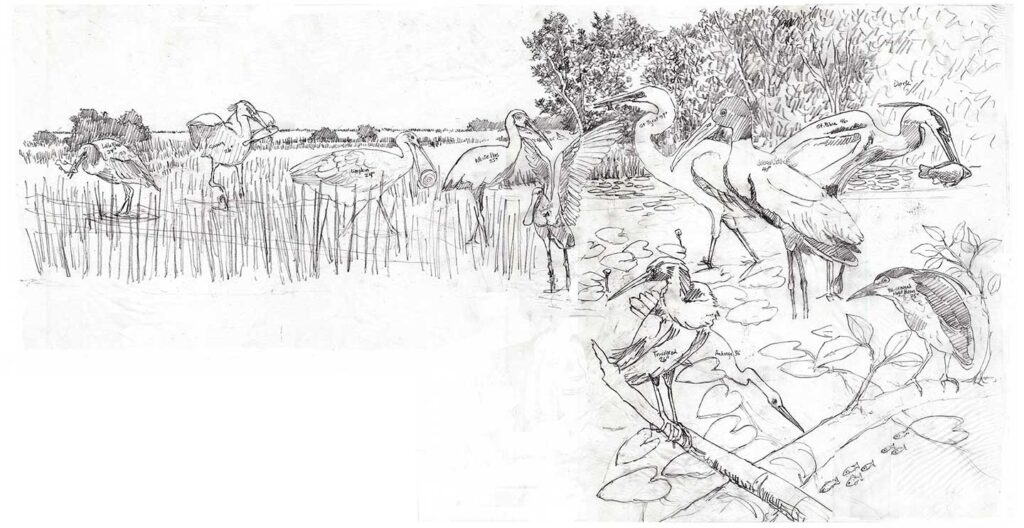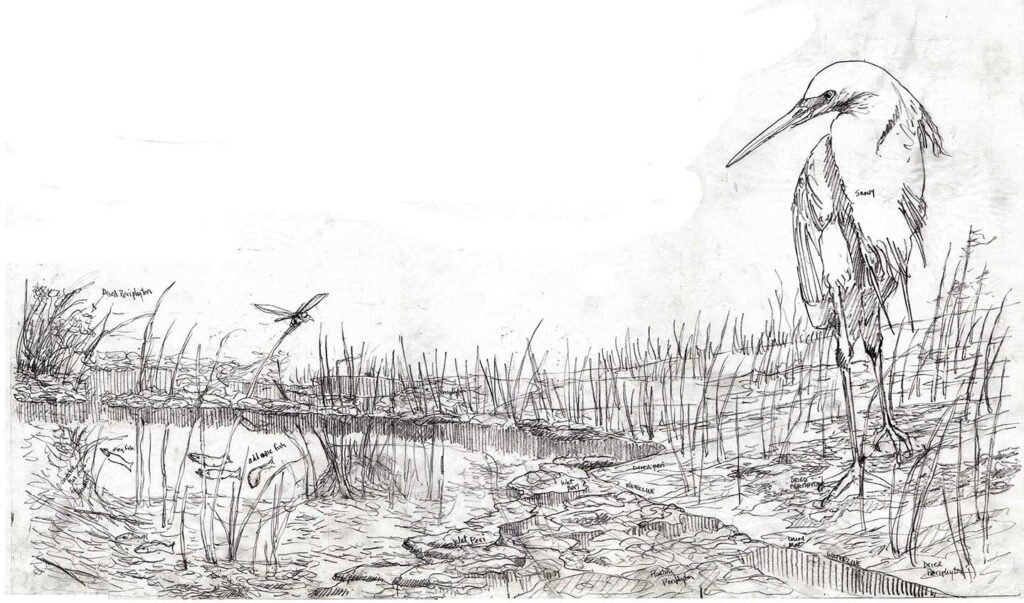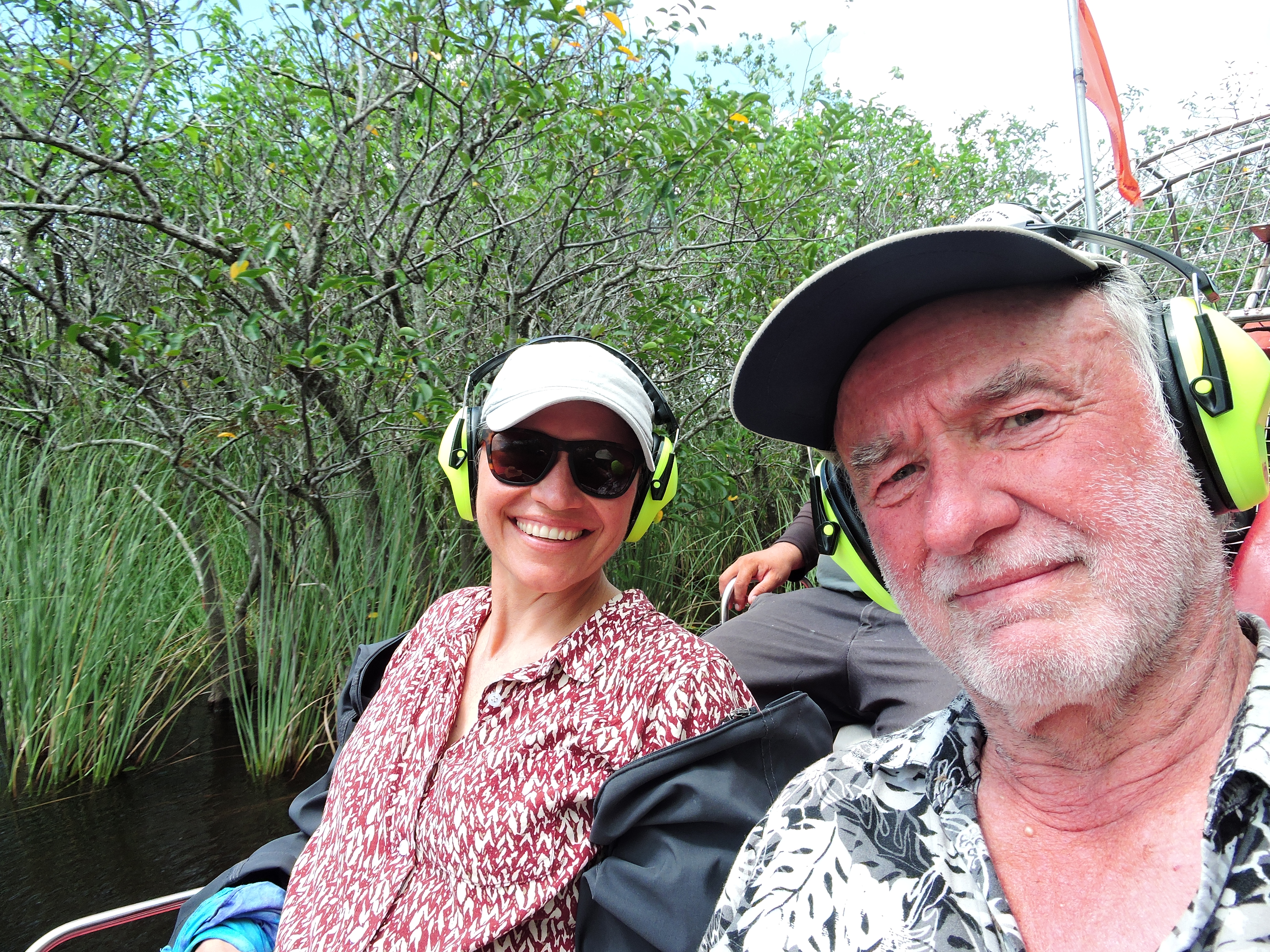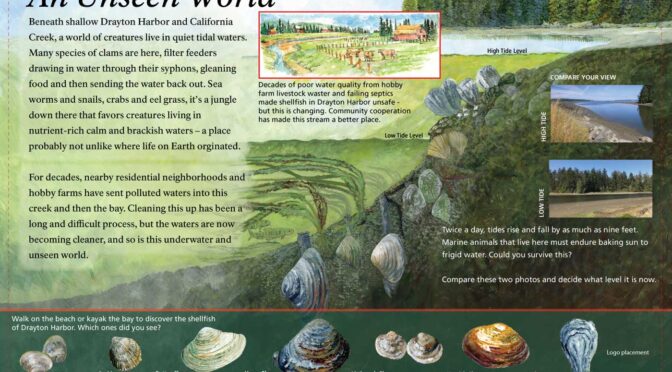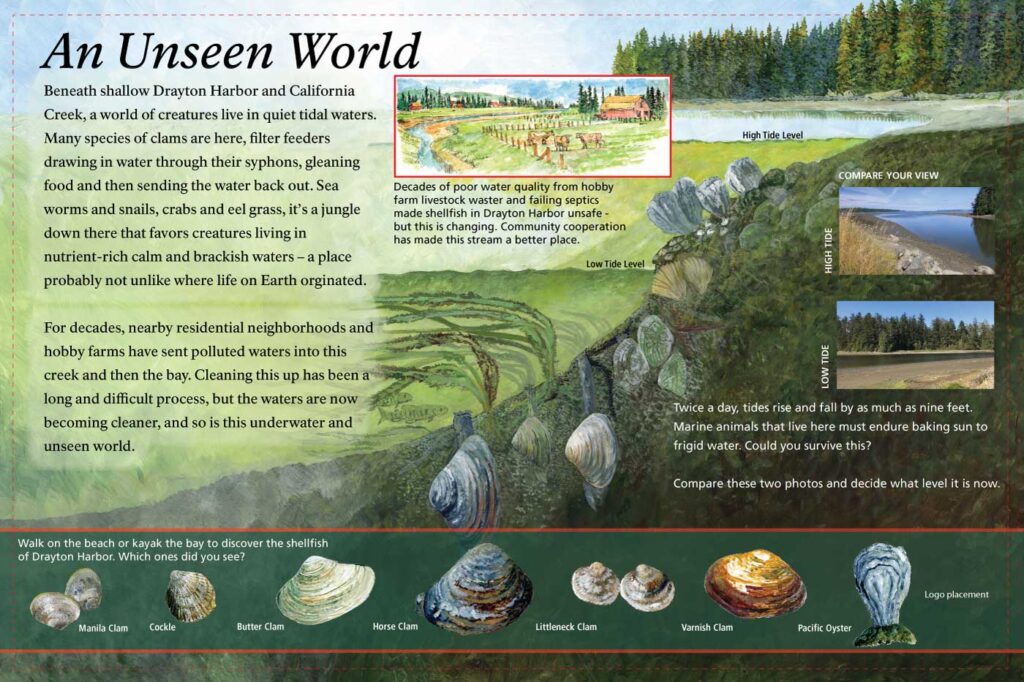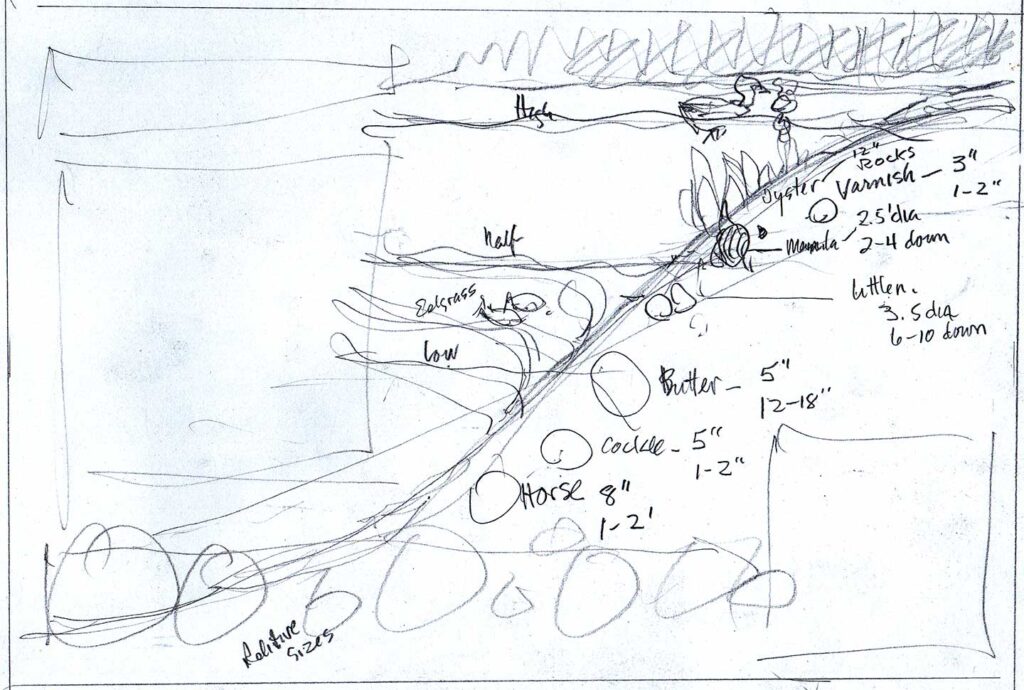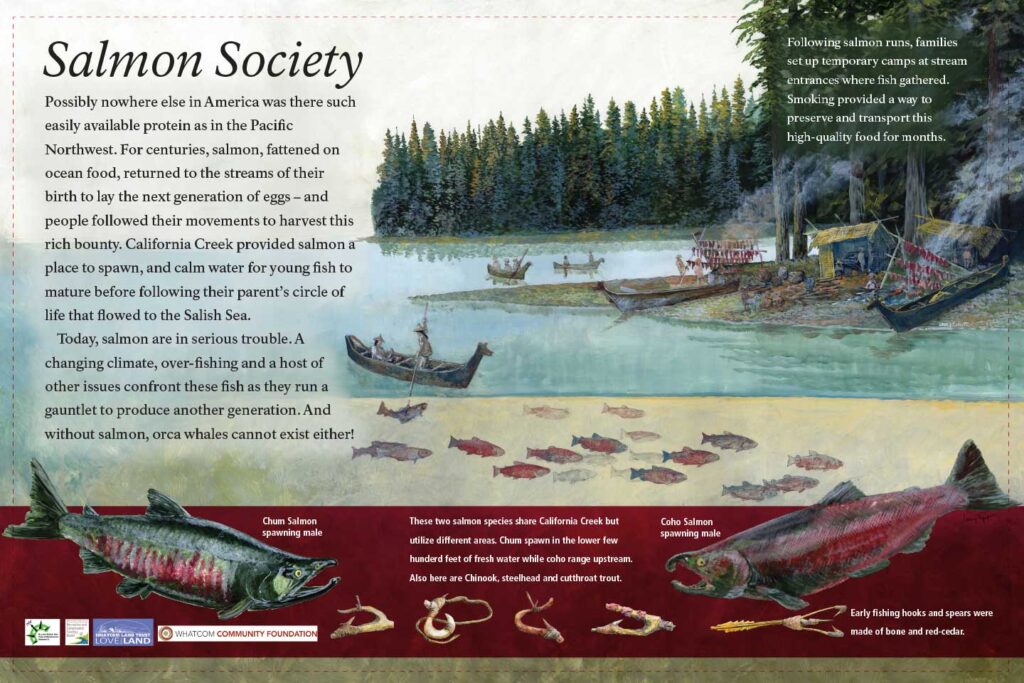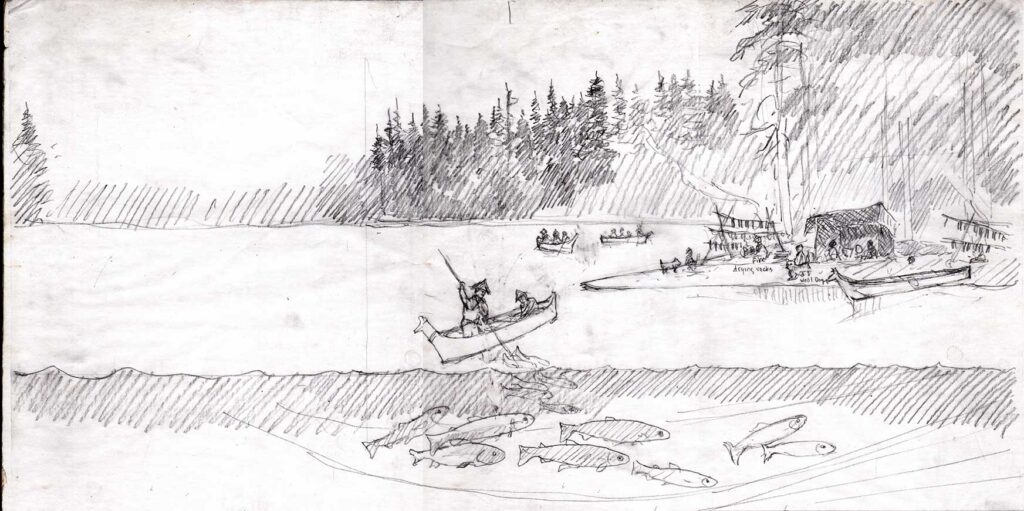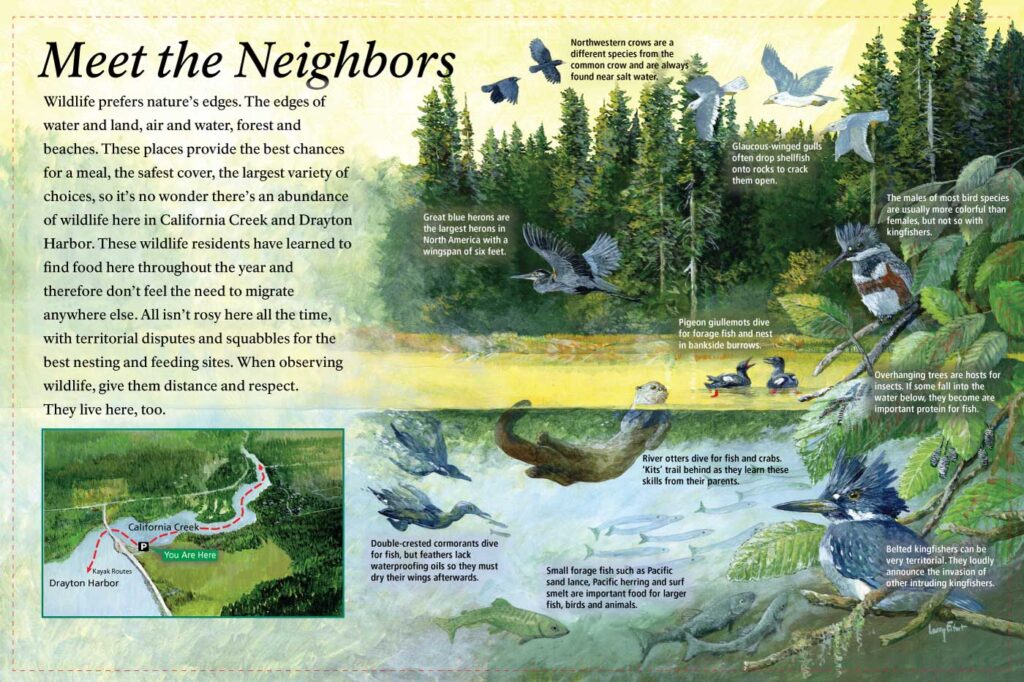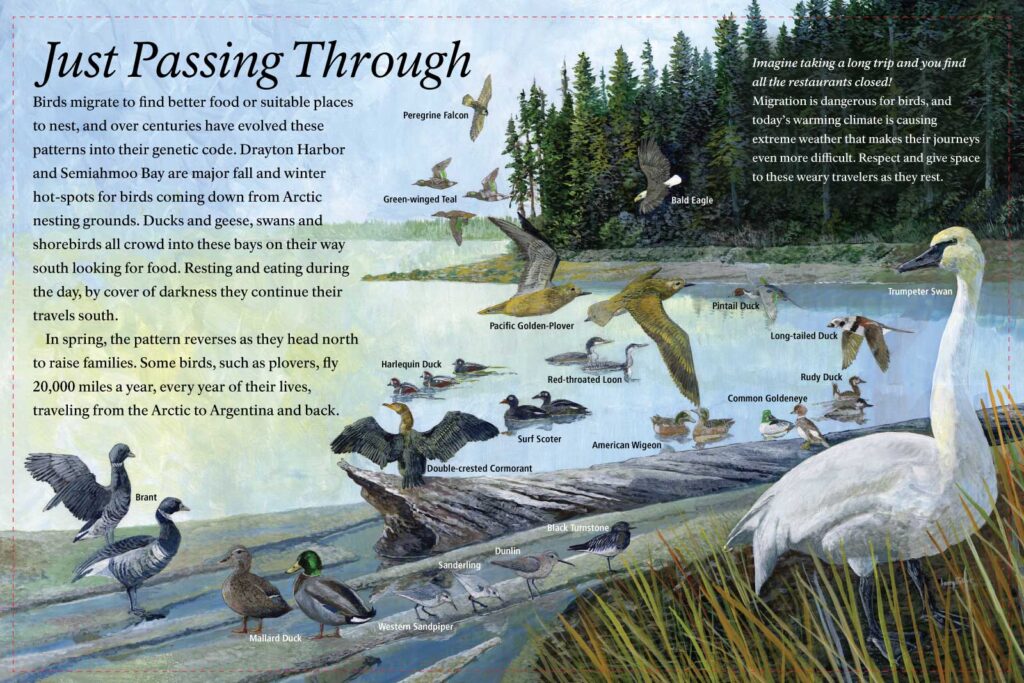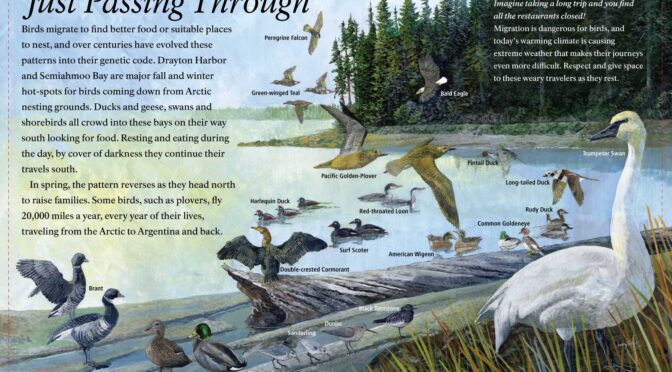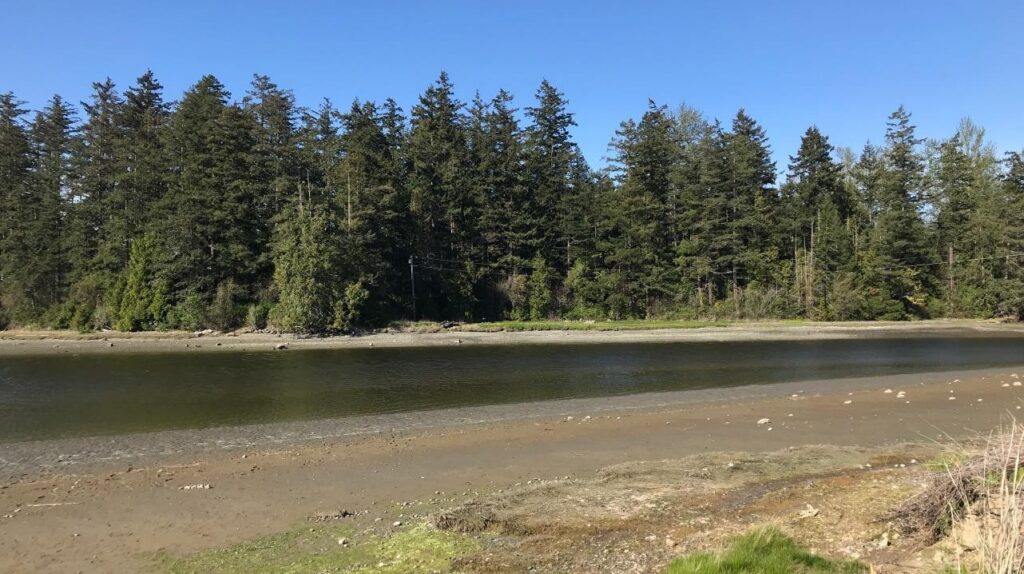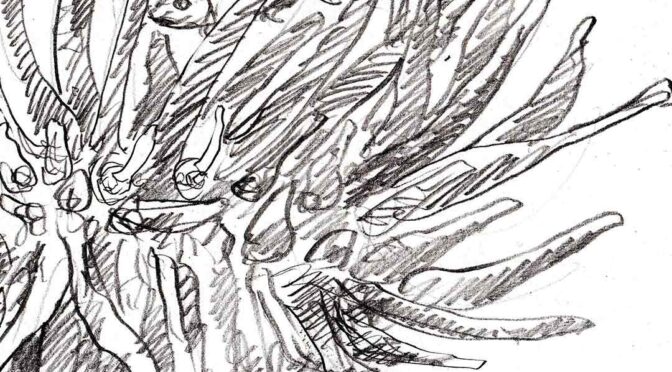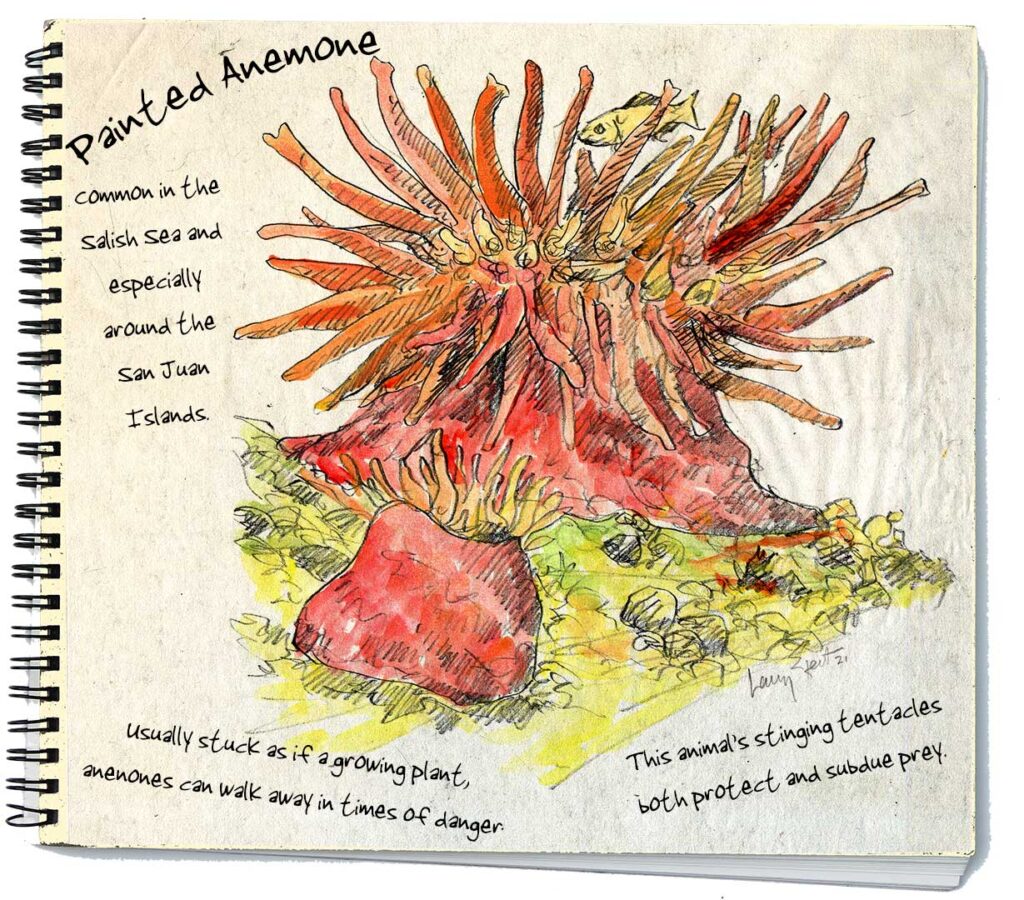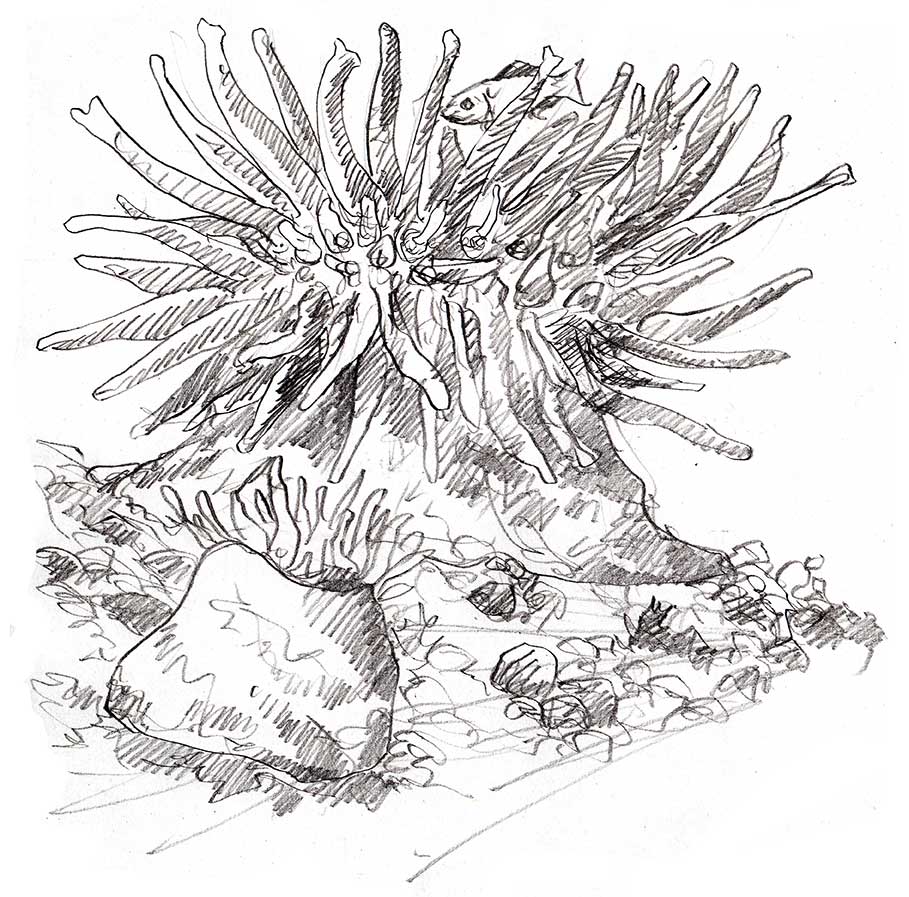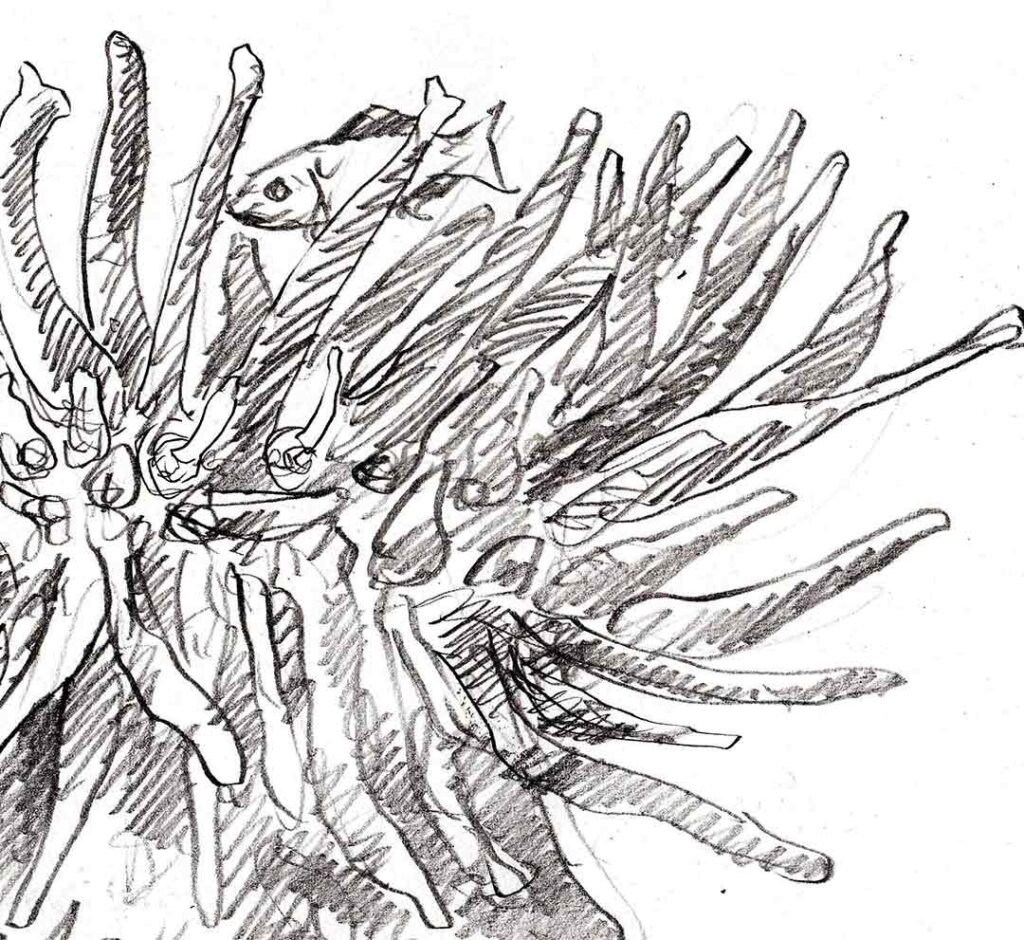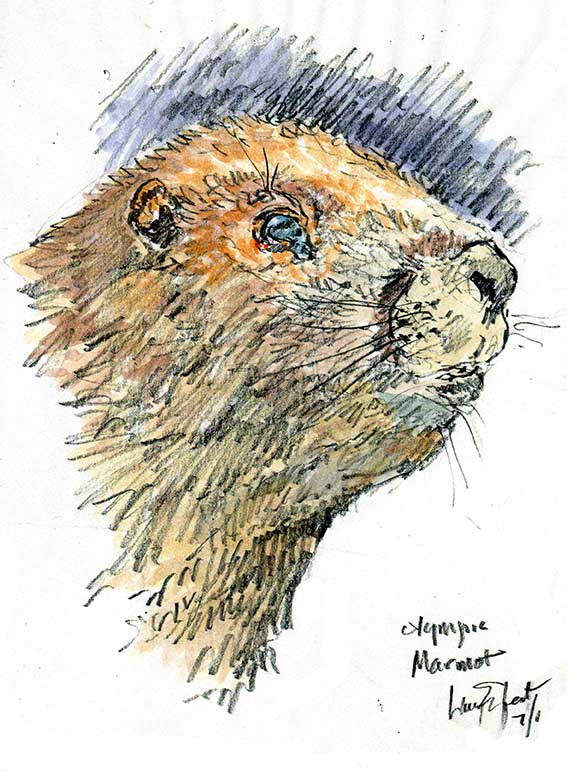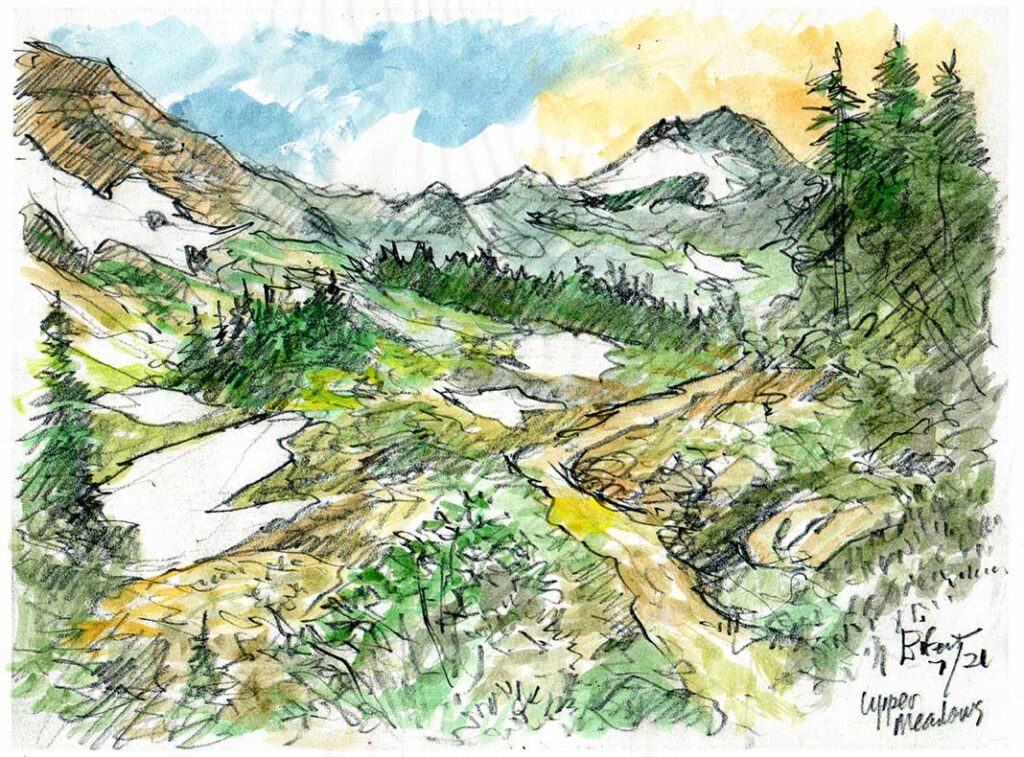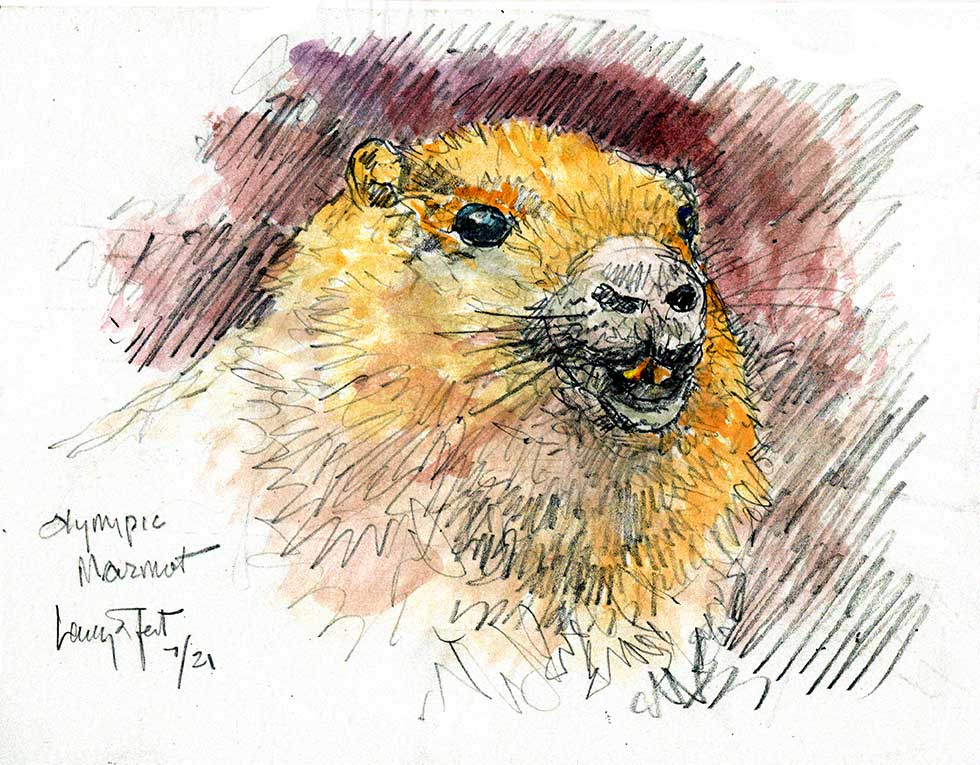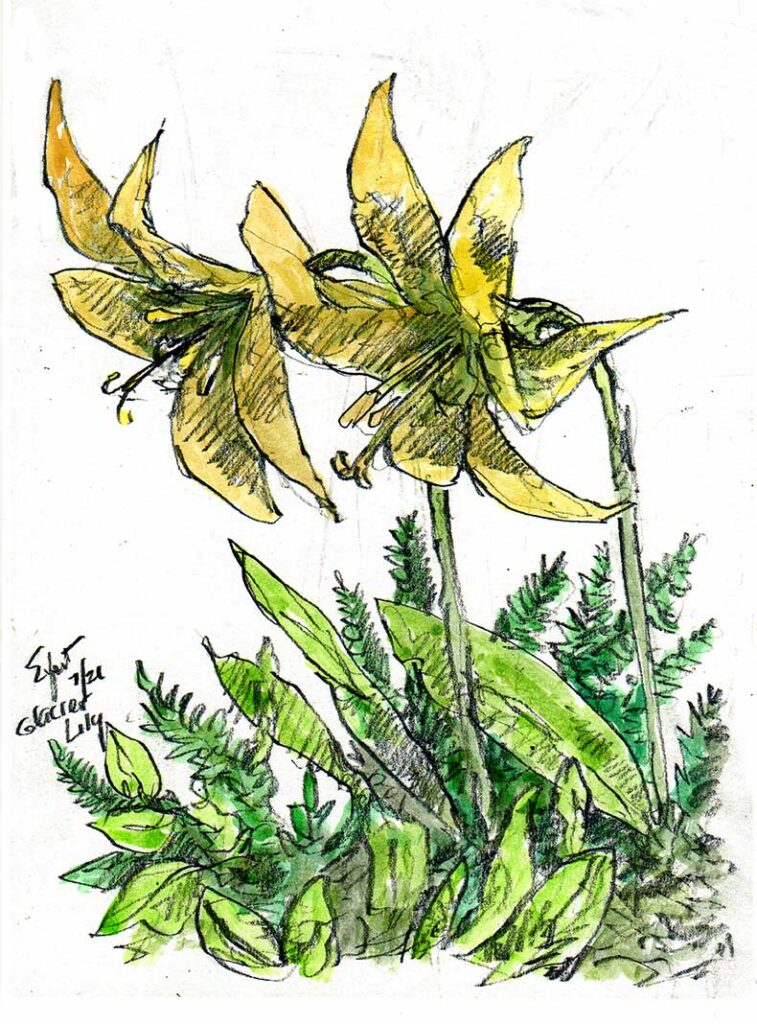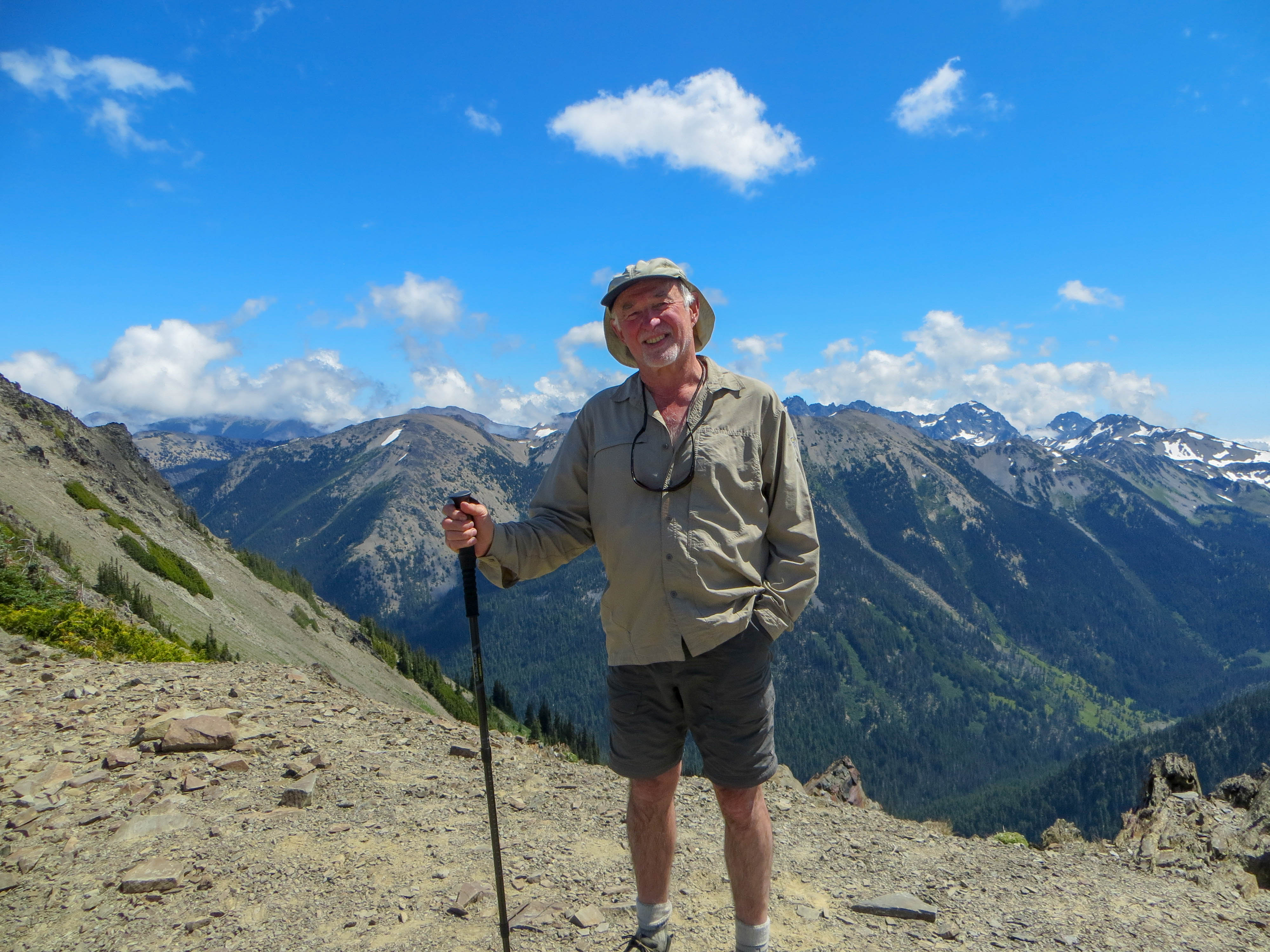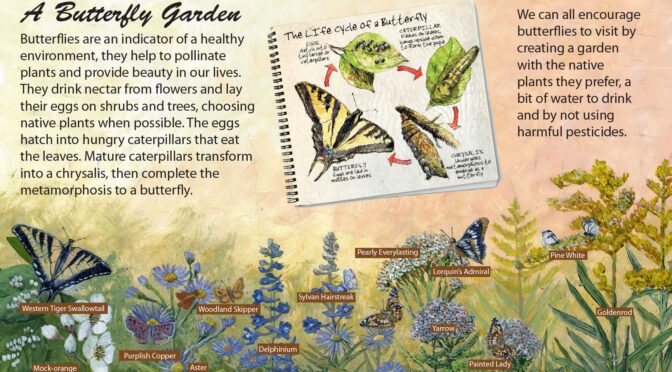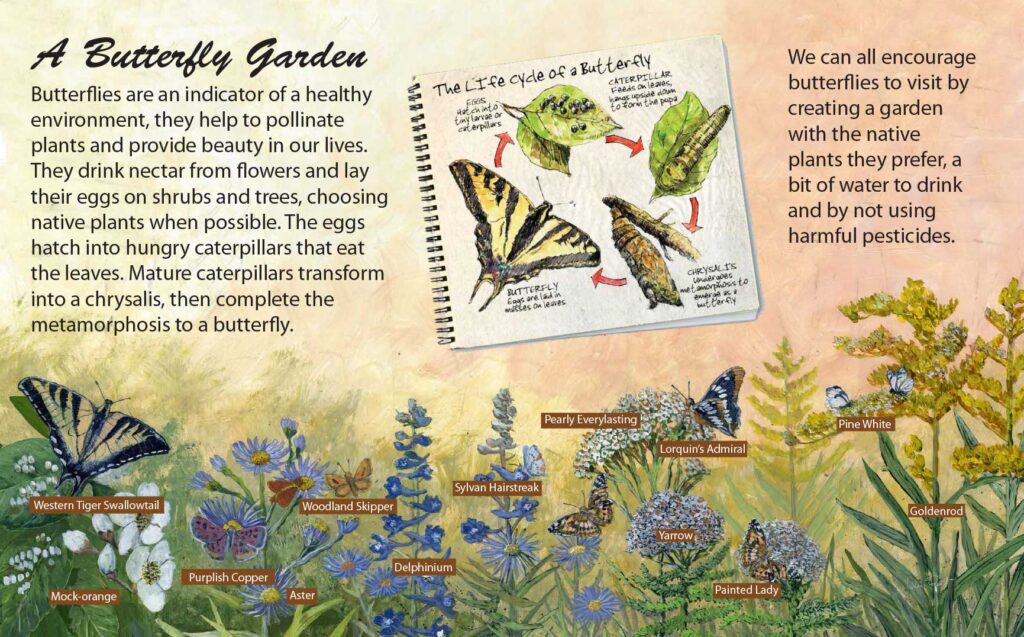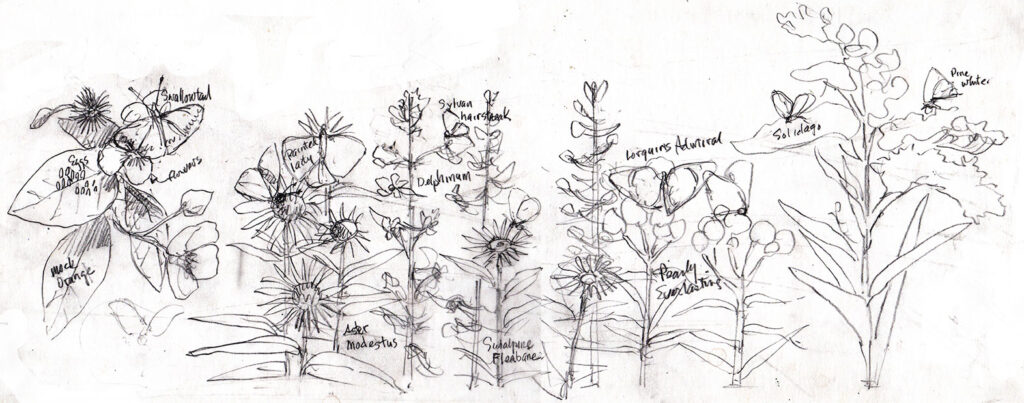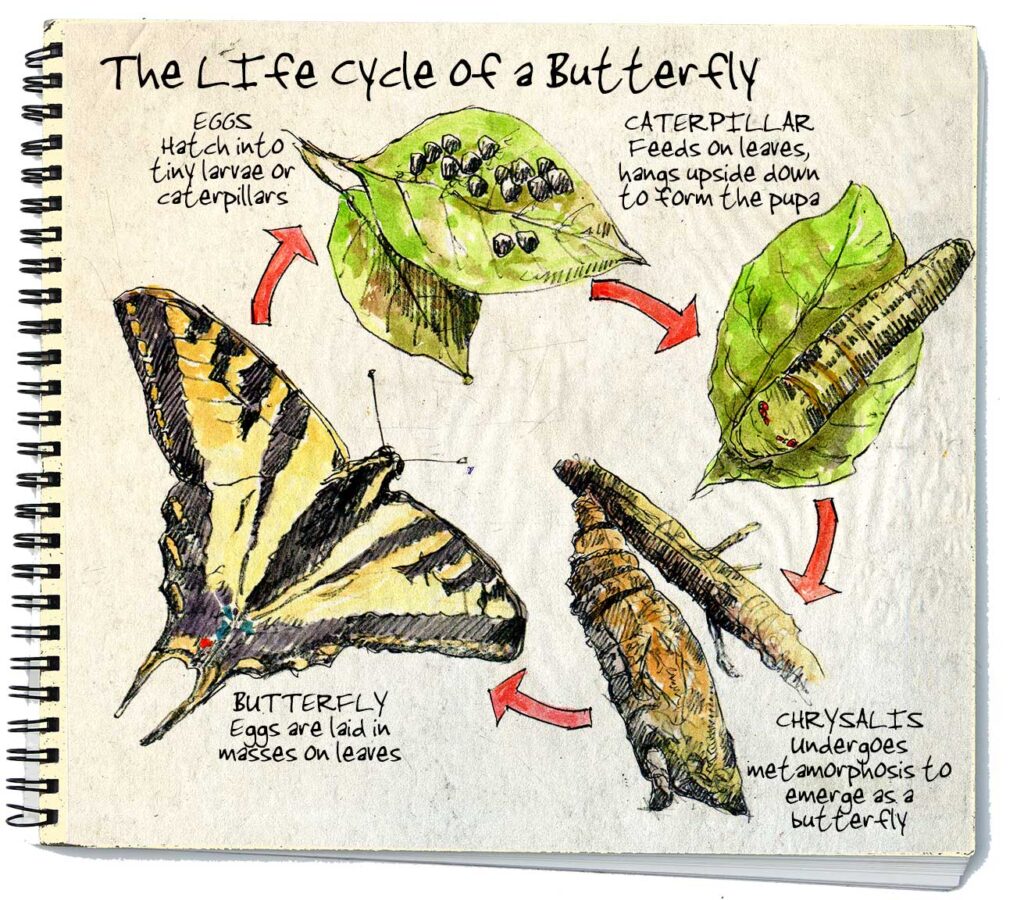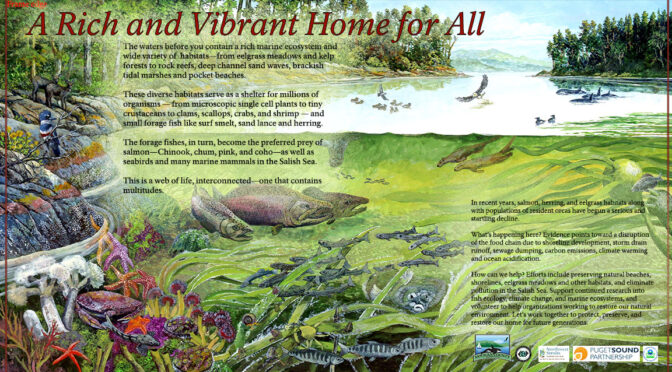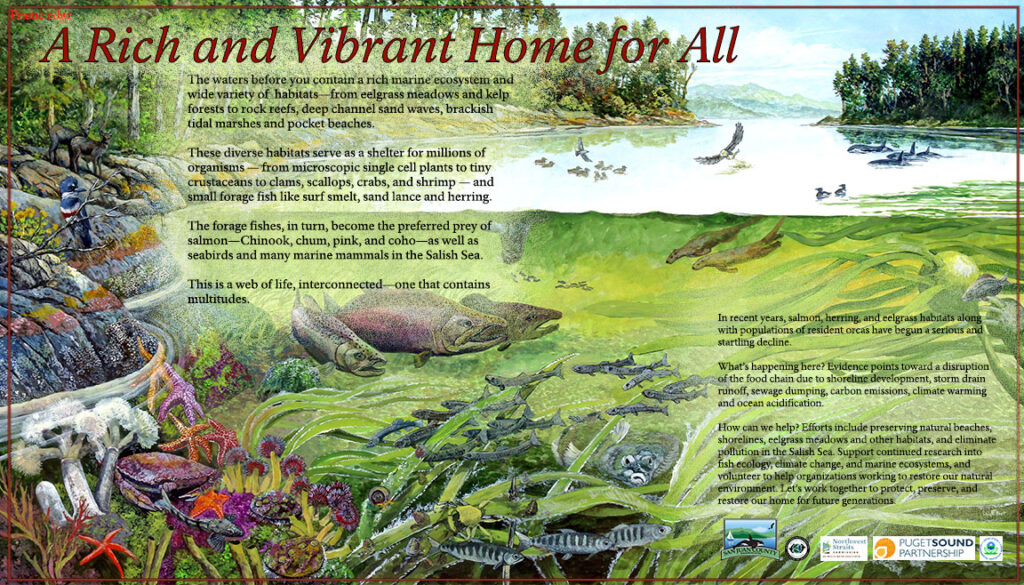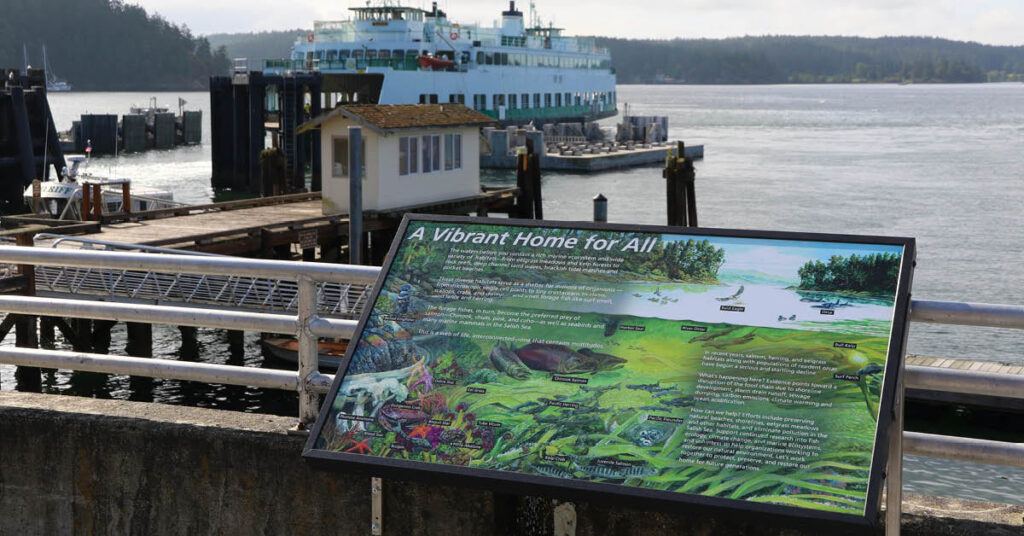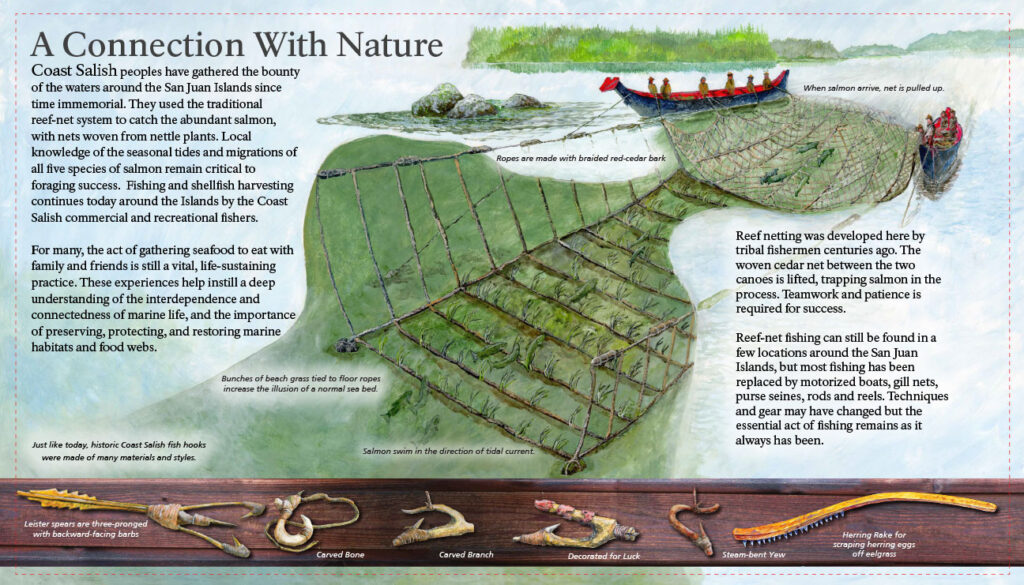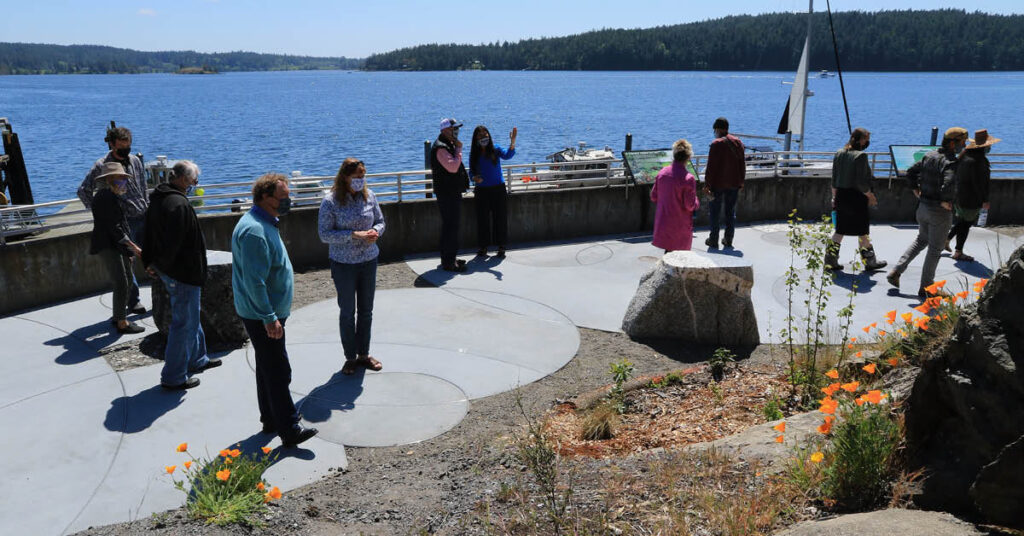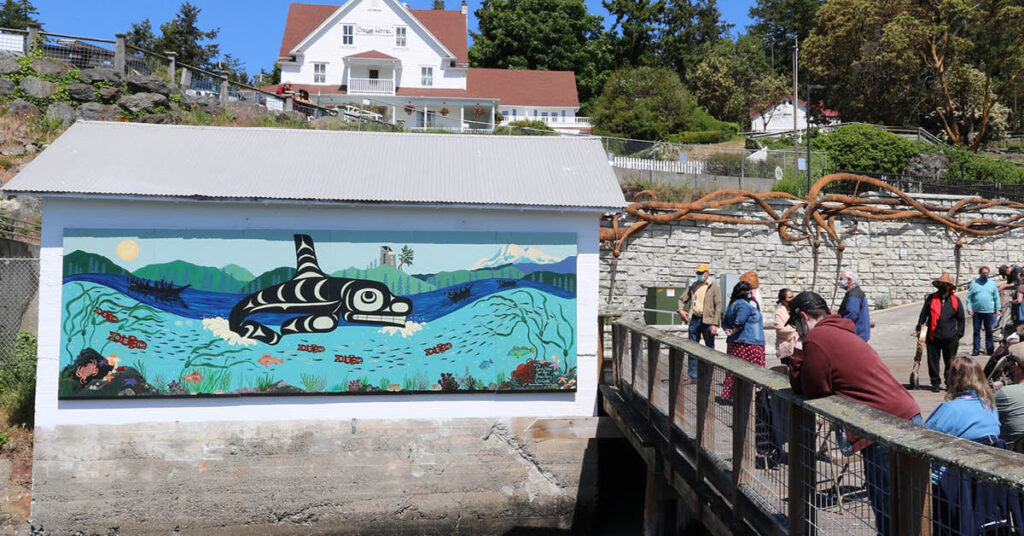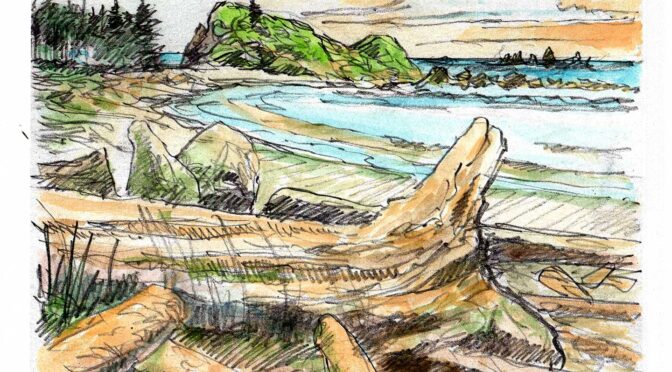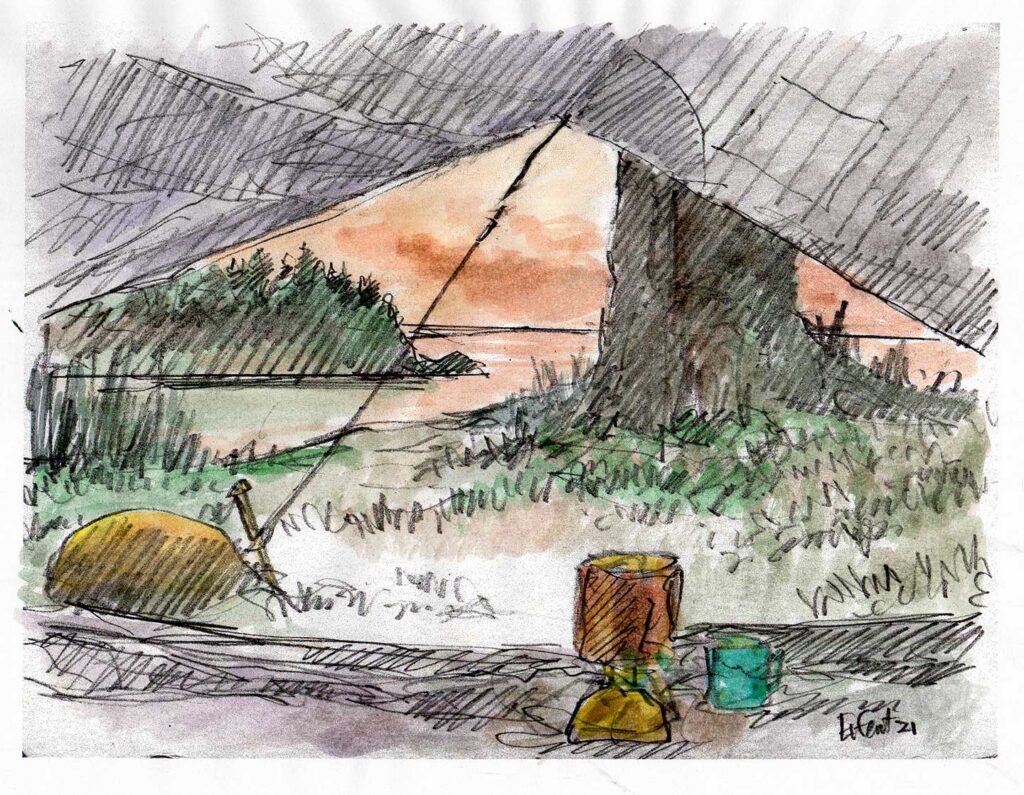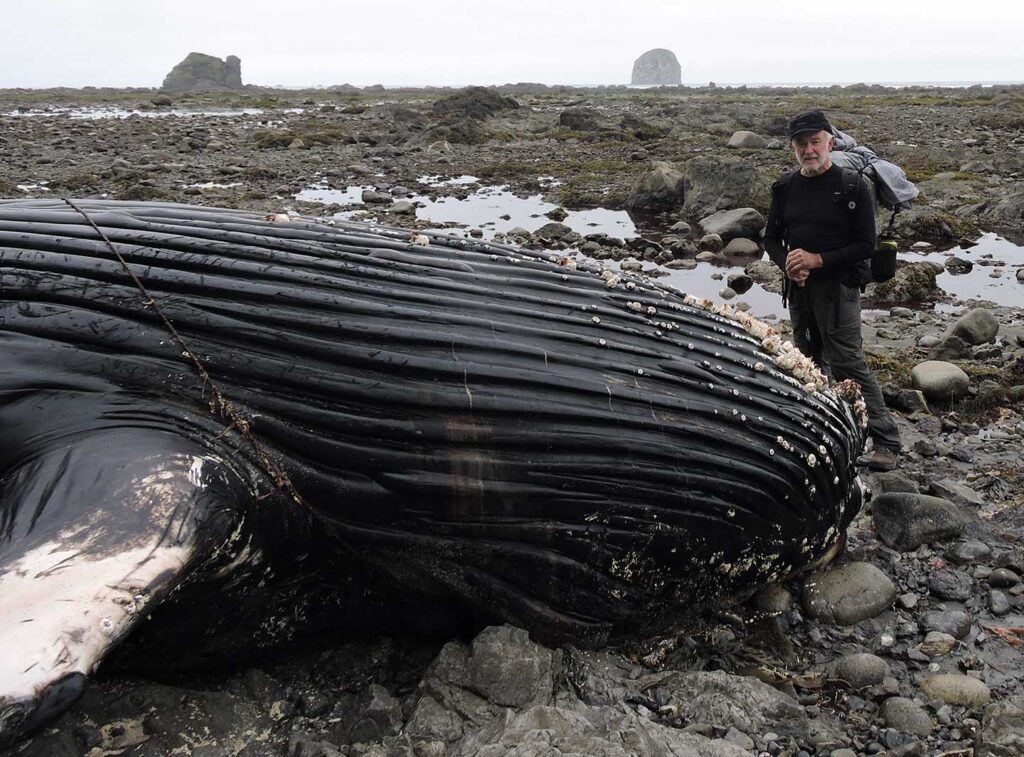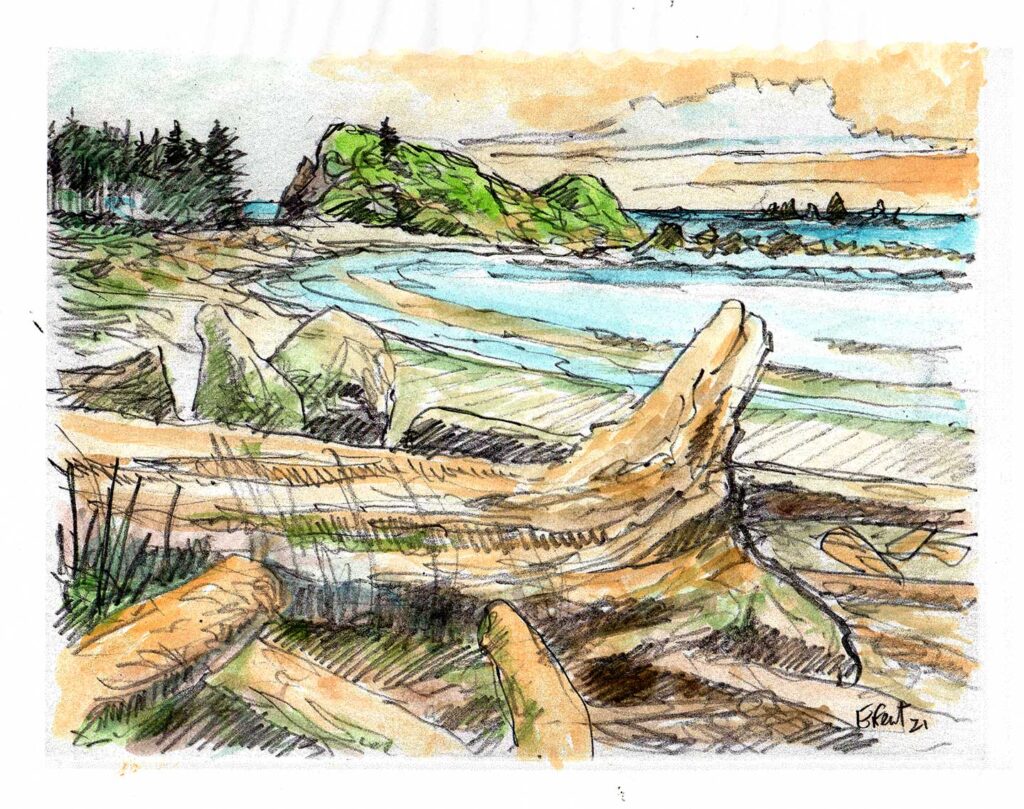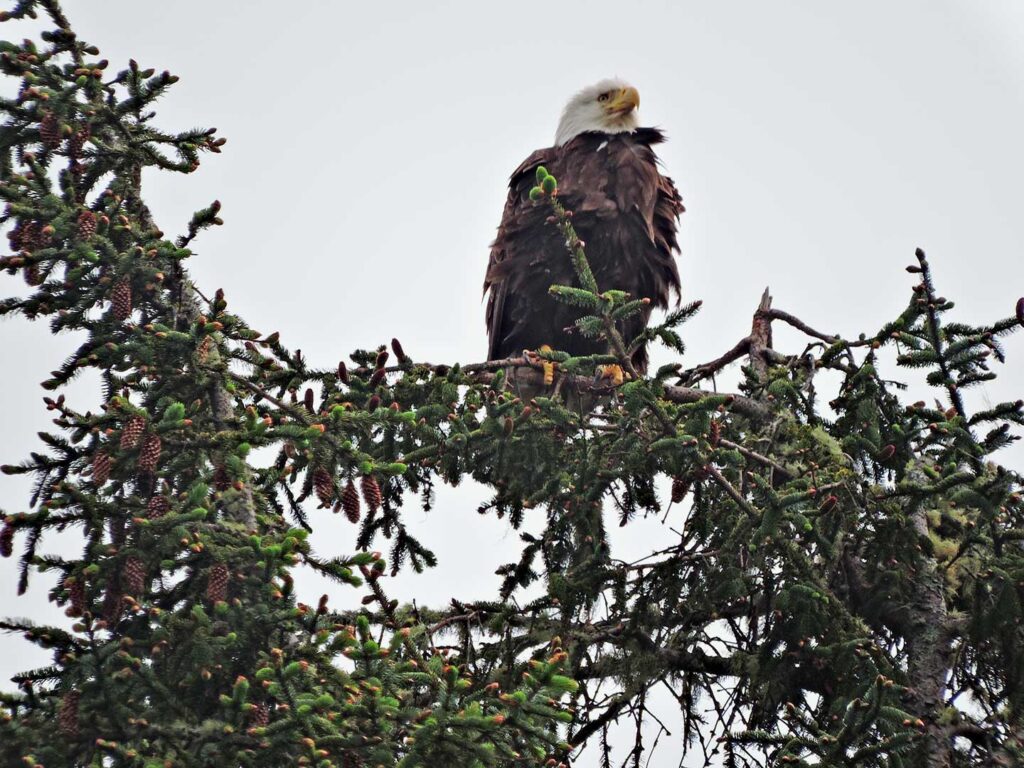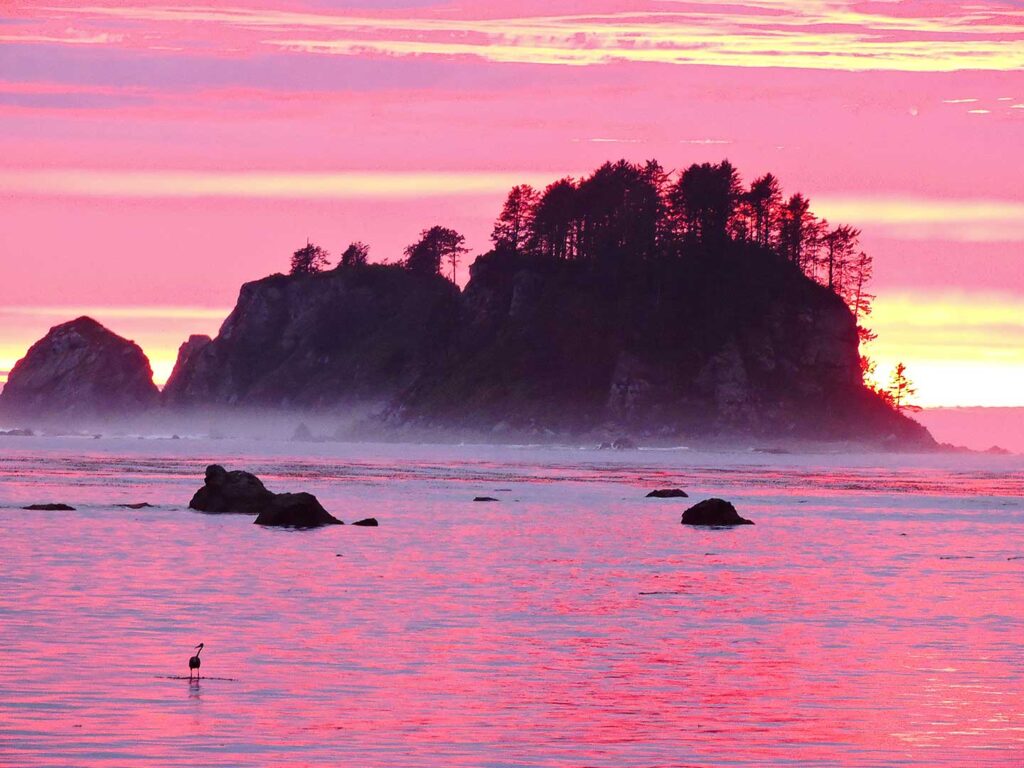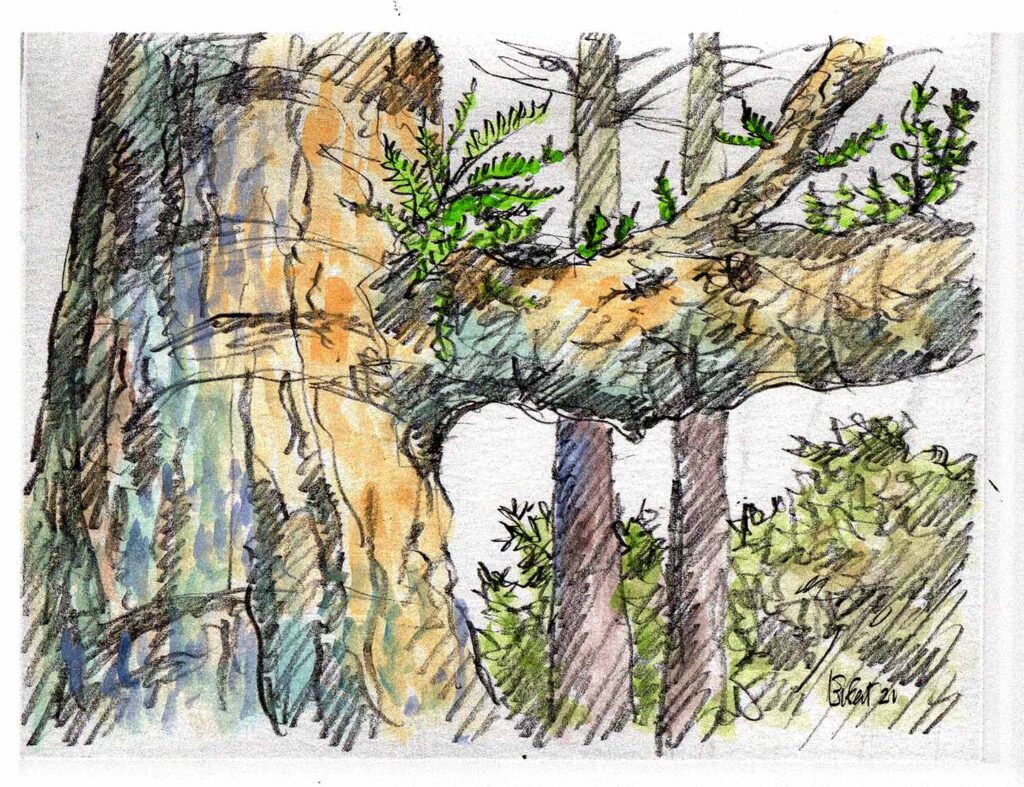I finished my prairie mural for the San Juan Islands National Historical Park a few days ago. So, I thought I’d pass it around here where I reliably get some feedback – good or bad. A very solitary live I have, painting and just sending this stuff out to wait for time to happen. I think I nailed the landscape well, but I won’t know for awhile. Below are some portions of it, left and right sides.
And below is the sketch. This place is very complex when you actually get down on your knees and look at it. VERY complex. As in, how the heck do I paint THIS? And the real physical place is much more detailed than I attempted.
I wrote this about my project here a few months ago: I have a long history with the San Juan Islands of Washington State. In the 80’s and on my own restored boat, I summered here while I learned to paint (heck, I’m still learning to paint). And now I’m back there making some rather large murals for the new visitor center at the American Camp unit of the National Historical Park down at the island’s south end at Cattle Point and South Beach. Nancy and I went there a few weeks ago, a FOUR ferry ride for us up and back!
This will be printed (the original won’t be on the wall in case the terrorists burn it down) and will be 6′ wide x 5′ high. Surrounding the visitor center is open prairie stuck out on a point with water on both sides – and one of the most beautiful places in the Salish Sea.
I cropped out some detailed sections so you could see the drawing better, but even so it’s a fairly complex bunch of lines. There are glacial erratic boulders that have some strange mossy adaptions, a butterfly only found here, voles and snails, birds and invasive rabbits. Red foxes that are Cascade dark phase colors, lots of black-tailed deer and meadowlarks (a bird we’ve never seen here at home just 30m south) We saw almost everything going in the painting on the site visit.
Here are my drawings for the bottom section. See how much more open it is so it’s understandable. In the color phase it got much more detailed. Truly fun to paint.
Here’s the empty building waiting for these two paintings, plus another dozen smaller ones. Getting the first one finished helps me understand how I’ll handle the color and detail on the others. The big wall is next, 38 feet of it. Thanks, Joe, Sara and Lex at the park for making this a fun and interesting project.
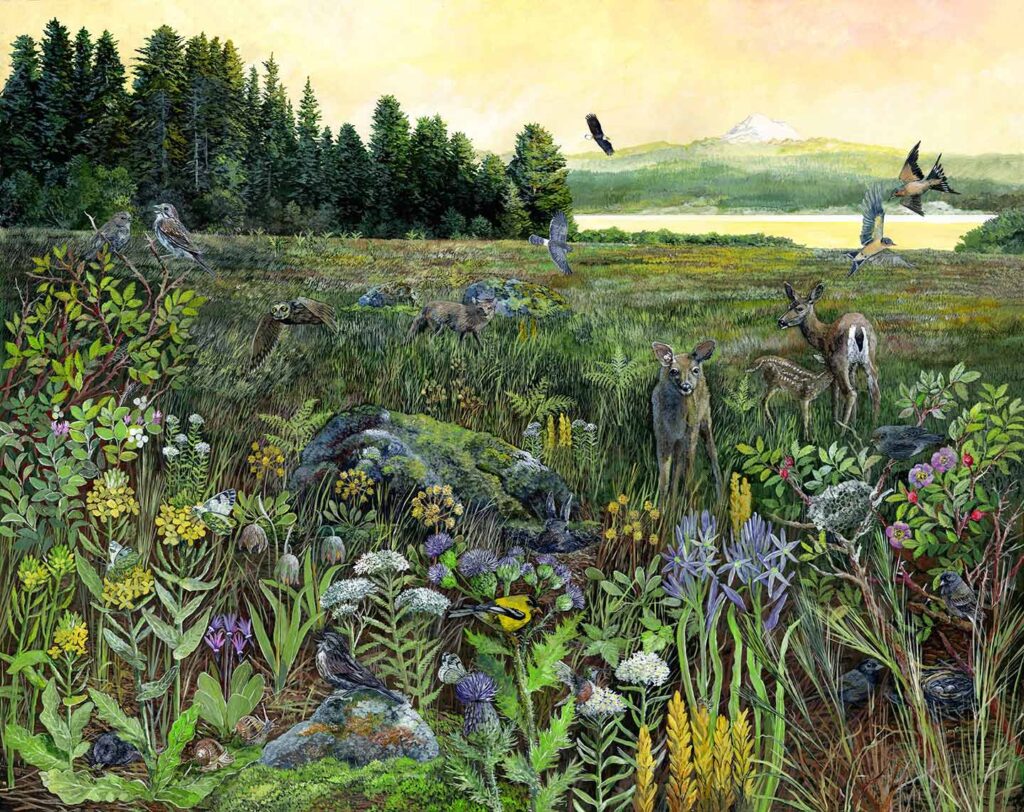
This view of the prairie and Strait shows scenery, but it also has lots of my paintings if you know where to look. From Mount Rainier NP in the very distant background 100 miles away, to state parks and land trust installations in between, I think I probably have 100 paintings in various exhibits and waysides in view here. But who’s counting.
And here’s the 38′ wall with my concept sketch for the next painting. How the heck I show a 38′ wall in a dinky blog post, I’m not even going to try to do. So stay tuned.
Thanks for reading this week. You can sign up for emails for these posts on my website at larryeifert.com.
Larry Eifert
Here’s my Facebook fan page. I post lots of other stuff there.
Click here to go to our main website – with jigsaw puzzles, prints, interpretive portfolios and lots of other stuff.
Nancy’s web portfolio of stunning photography and paintings.
